The Samsung S85F with a QD-OLED panel is capable of surprising – and in a very positive way. Even before the tests, we did not think that in the case of TVs often referred to in the context of "panel lotteries", one could come across something that would benefit the user. Yet, in this case, particularly with the 55-inch version, it has fully succeeded. The QD-OLED panel, as expected from organic technology, offers near-perfect blacks and contrast in cinematic conditions. However, the difference lies in the way the colours are rendered – here it is simply exceptional. The colour gamut coverage is impressive, and after a slight calibration, the colours become almost exemplary. Motion fluidity is also at a very high level. The 120 Hz panel handles both sports and action films excellently. And if someone plans to connect a console to the S85F, they will receive a full set of advantages: low input lag, variable refresh rate, Game Bar, and full HDMI 2.1 support. In everyday use, we were supported by the Tizen system – closed, but extremely polished. It responds quickly, offers a rich selection of apps, and features like AirPlay and voice control make it hard to find anything more complete in this category. True, the S85F is not without its flaws. However, the balance of pros and cons is exceptionally favourable here. One could even get the impression that it is one of the best TVs in its price segment.
- Matching (Score)
- Our verdict
- TV appearance
- Where to buy
- Contrast and black detail
- HDR effect quality
- Factory color reproduction
- Color reproduction after calibration
- Smoothness of tonal transitions
- Image scaling and smoothness of tonal transitions
- Blur and motion smoothness
- Console compatibility and gaming features
- Input lag
- Compatibility with PC
- Viewing angles
- Daytime performance
- Panel details
- TV features
- Apps
- Playing files from USB
- Sound
Samsung S85F OLED vs Samsung S85F (WOLED)
Direct comparison
S85F / FAE / FAU
S85F / FAU / FAE
Available screen sizes: 55”
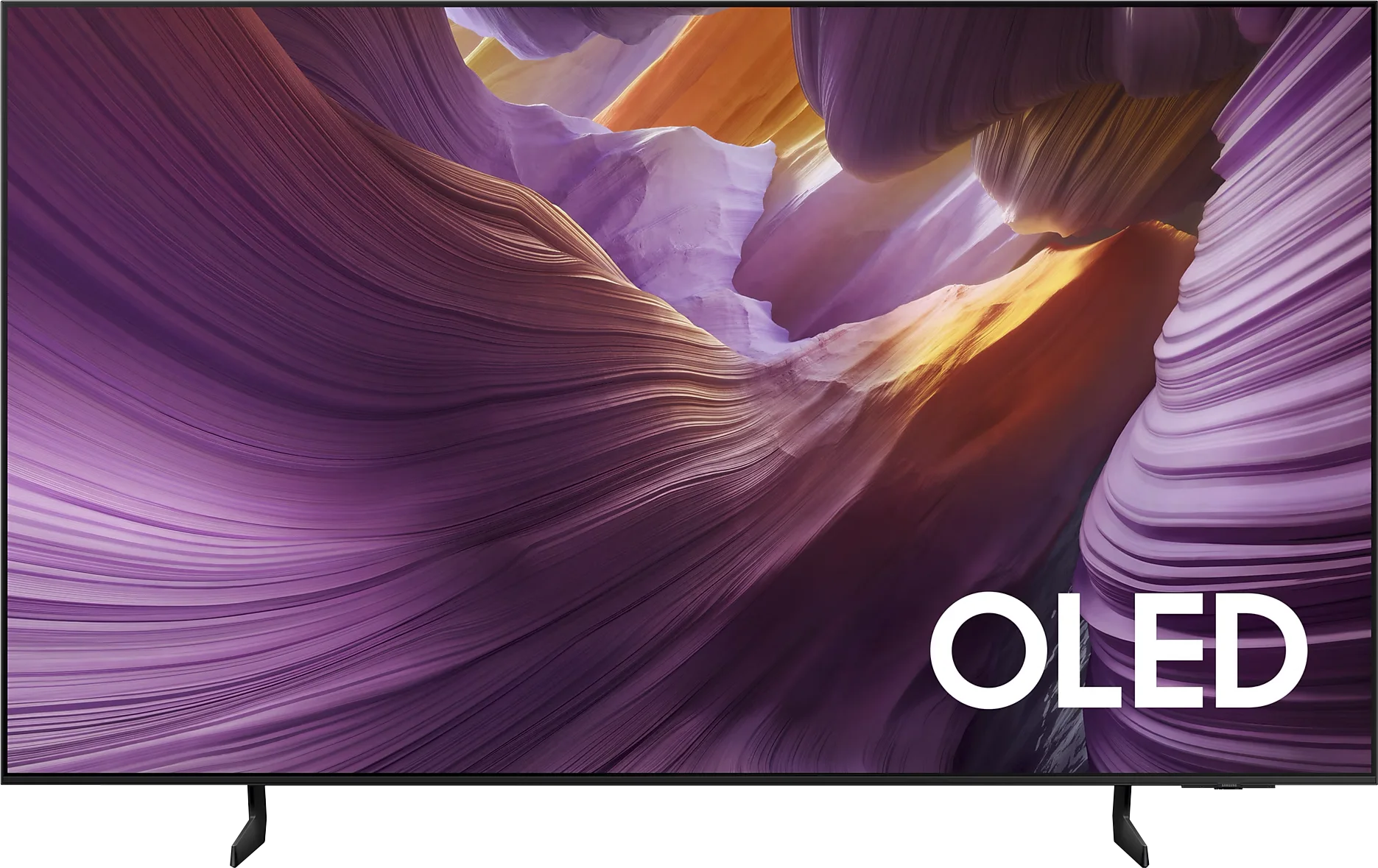

Panel type: QD-OLED
Resolution: 3840x2160
System: Tizen
Model year: 2025
Complete the survey to find out the result

Panel type: WRGB OLED
Resolution: 3840x2160
System: Tizen
Model year: 2025
Complete the survey to find out the result

Overall rating
8.0
7.7
Movies and series in UHD quality
8.4
7.9
Classic TV, YouTube
9.2
8.6
Sports broadcasts (TV and apps)
8.9
8.5
Gaming on console
9.3
8.7
TV as a computer monitor
7.6
7.6
Watching in bright light
5.1
5.3
Utility functions
7.3
7.3
Apps
8.7
8.7
Sound quality
7.2
7.2
Complete the survey to find out what fits your preferences
Advantages
Outstanding black levels and contrast
Amazing colour palette coverage thanks to the QD-OLED panel
Great picture quality in SDR and HDR content
High colour accuracy after calibration
Very good motion smoothness – 120 Hz OLED panel
Rich set of features for gamers: VRR, Game Bar, low input lag
4 HDMI 2.1 ports with full 48 Gbps bandwidth
Advanced and smoothly operating Tizen system
Solar Remote with multiple capabilities
Remarkable black and contrast
Great picture in SDR and HDR content after calibration
Very good motion smoothness – 120 Hz OLED panel
Rich set of features for gamers: VRR, Game Bar, low input lag
4 HDMI 2.1 ports with full bandwidth of 48 Gbps
Advanced and smoothly operating Tizen system
Solar Remote with multiple capabilities
Disadvantages
No USB recording function and PiP
No Dolby Vision
Slight cherry black under very strong external light (not visible when watching in cinema conditions)
No HGiG function*
* This function disappeared with software update 1110.7 – we are monitoring this situation closely.
No USB recording function and PiP
No Dolby Vision
No HGiG* feature
Worse viewing angles, colour palette coverage, and lower brightness than the variant with QD-OLED panel
*This feature disappeared with software update 1110.7 – we are monitoring this situation closely.
Our verdict
Samsung S85F in the tested version with a WOLED panel is a television that must be evaluated primarily through the lens of its price. As befits organic technology, it offers perfect, almost ideal black levels and infinite contrast in cinematic conditions. This feature alone will make a huge impression on most buyers, especially when transitioning from any LCD television. However, it cannot be denied that in direct comparison with the 55-inch QD-OLED variant, the WOLED version shows some weaknesses. It is slightly dimmer, particularly in bright full-screen scenes, and offers noticeably worse viewing angles. Nevertheless, the rest of its advantages remain intact. Motion smoothness is at a high level – the 120 Hz panel handles both sports and action films exceptionally well. And if someone plans to connect a console to the S85F, they will receive a complete set of advantages: low input lag, variable refresh rate, Game Bar, and full HDMI 2.1 support. In everyday use, we were assisted by the Tizen system – closed but incredibly polished. It reacts quickly, offers a rich selection of applications, and features like AirPlay and voice control make it hard to find something more complete in this category. Indeed, the S85F in the WOLED variant is not the perfect television and takes a backseat to its sibling with the QD-OLED panel. However, its biggest weapon is its absurdly low price. The purchase cost is almost laughable in relation to the offered capabilities. It remains an excellent and, above all, affordable OLED that for a vast number of users will be one of the best and most cost-effective televisions on the market.
TV appearance

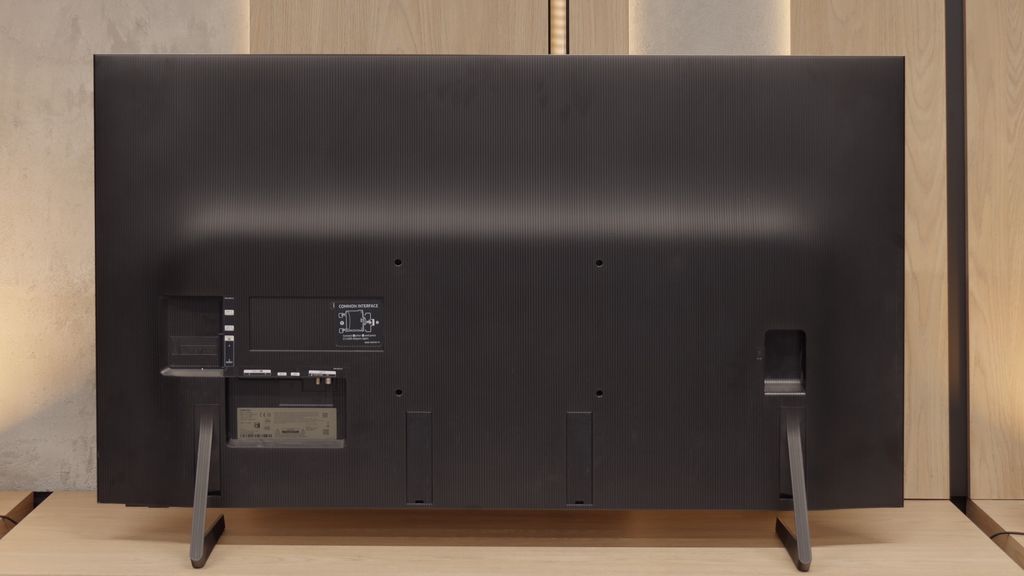
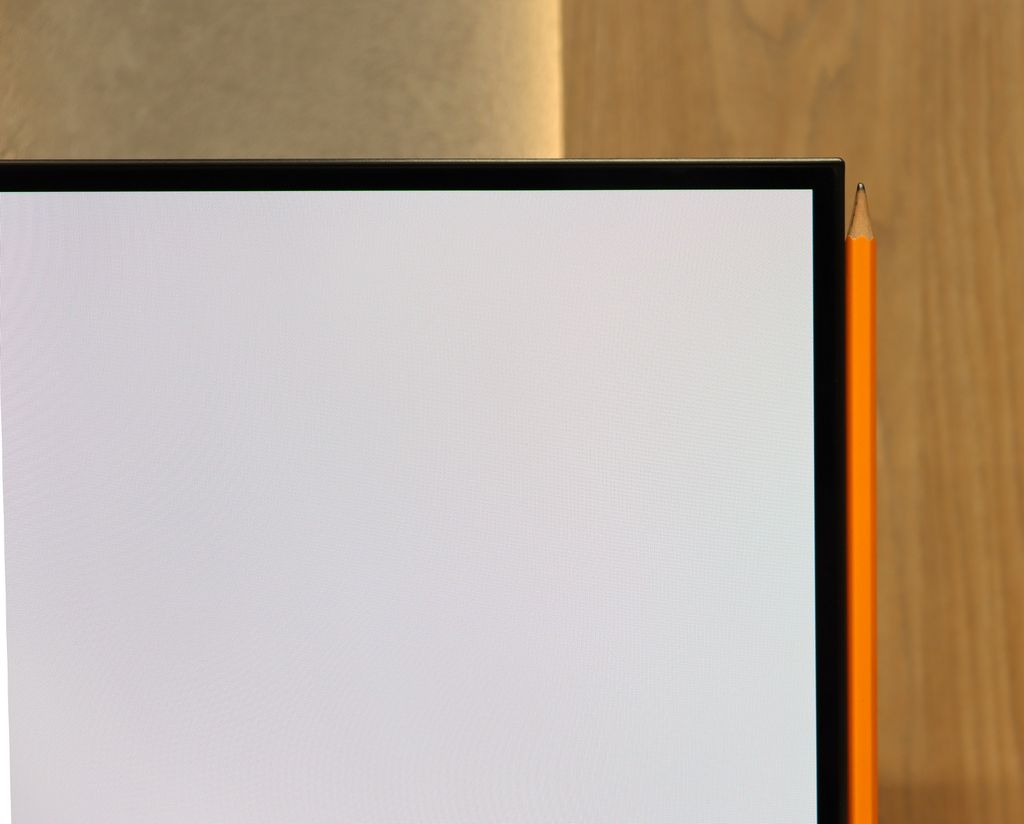

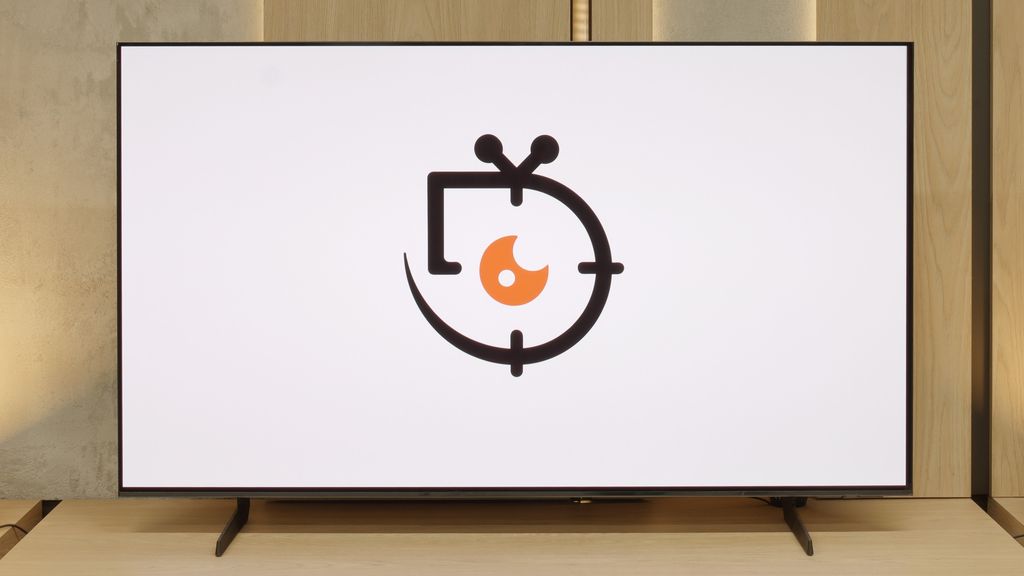

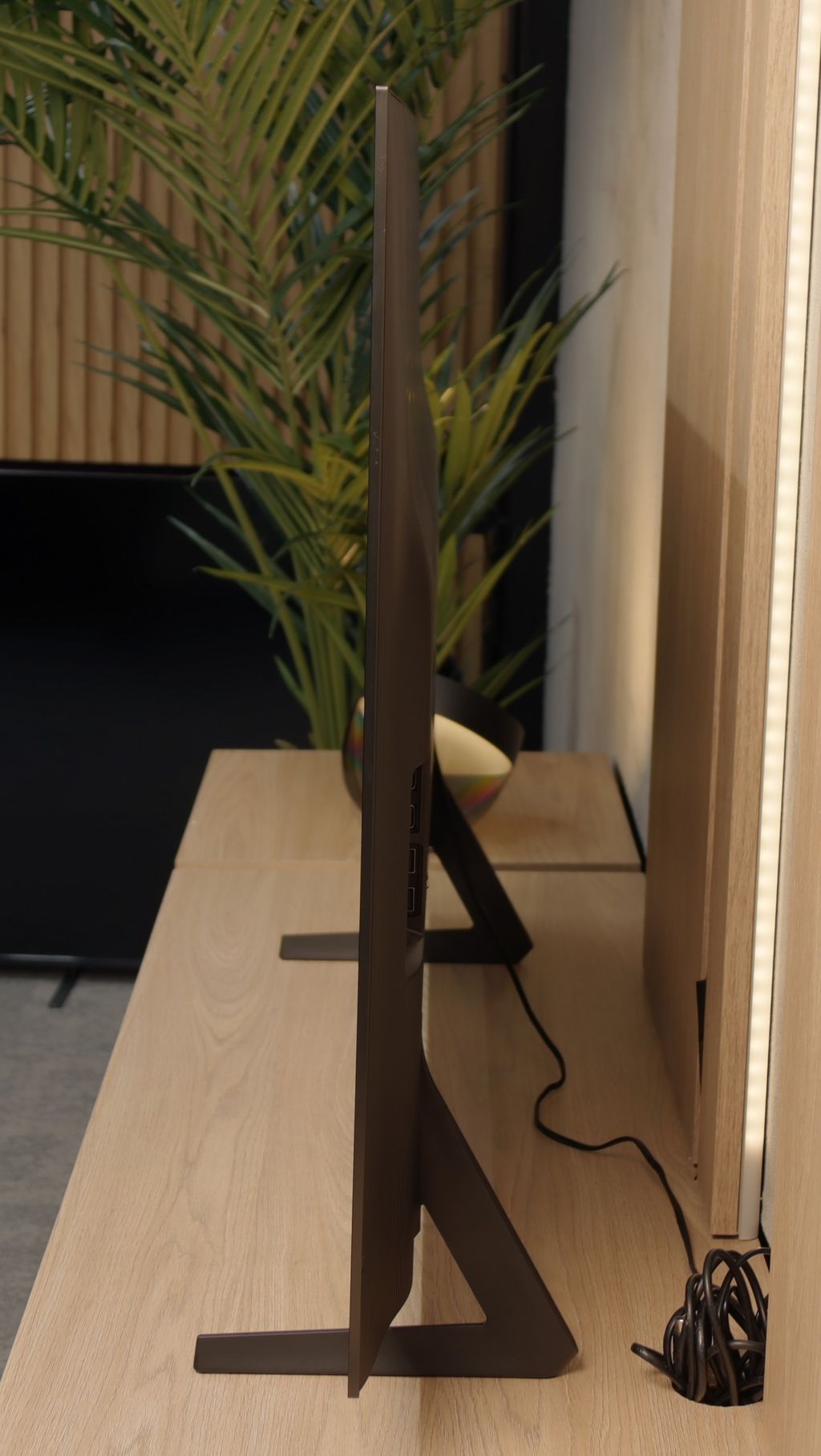
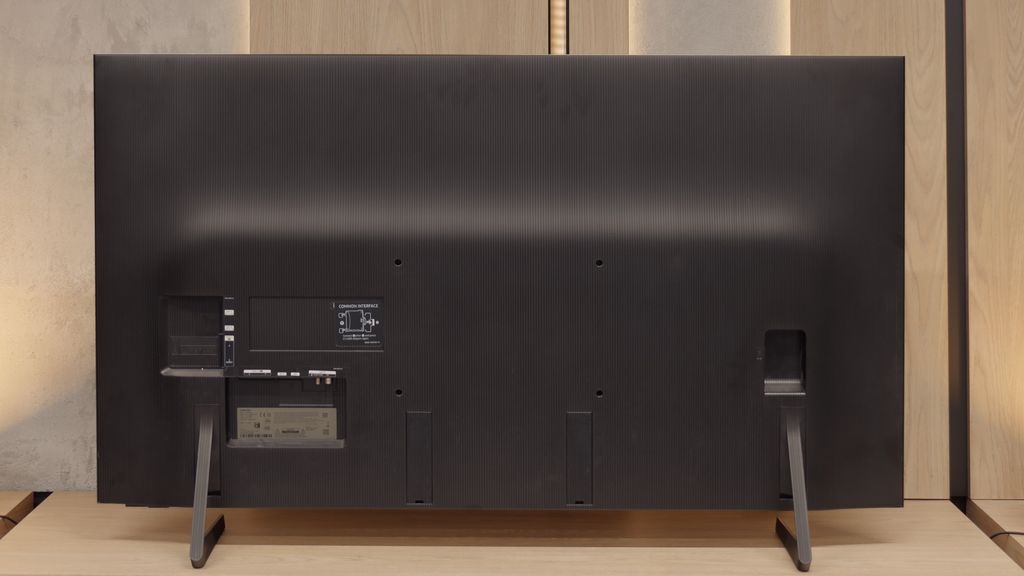
Contrast and black detail
10/10
10/10
Contrast:

Result
∞:1

Result
∞:1

Result
∞:1

Result
∞:1

Result
∞:1

Result
∞:1

Result
∞:1

Result
∞:1

Result
∞:1

Result
∞:1
Halo effect and black detail visibility:
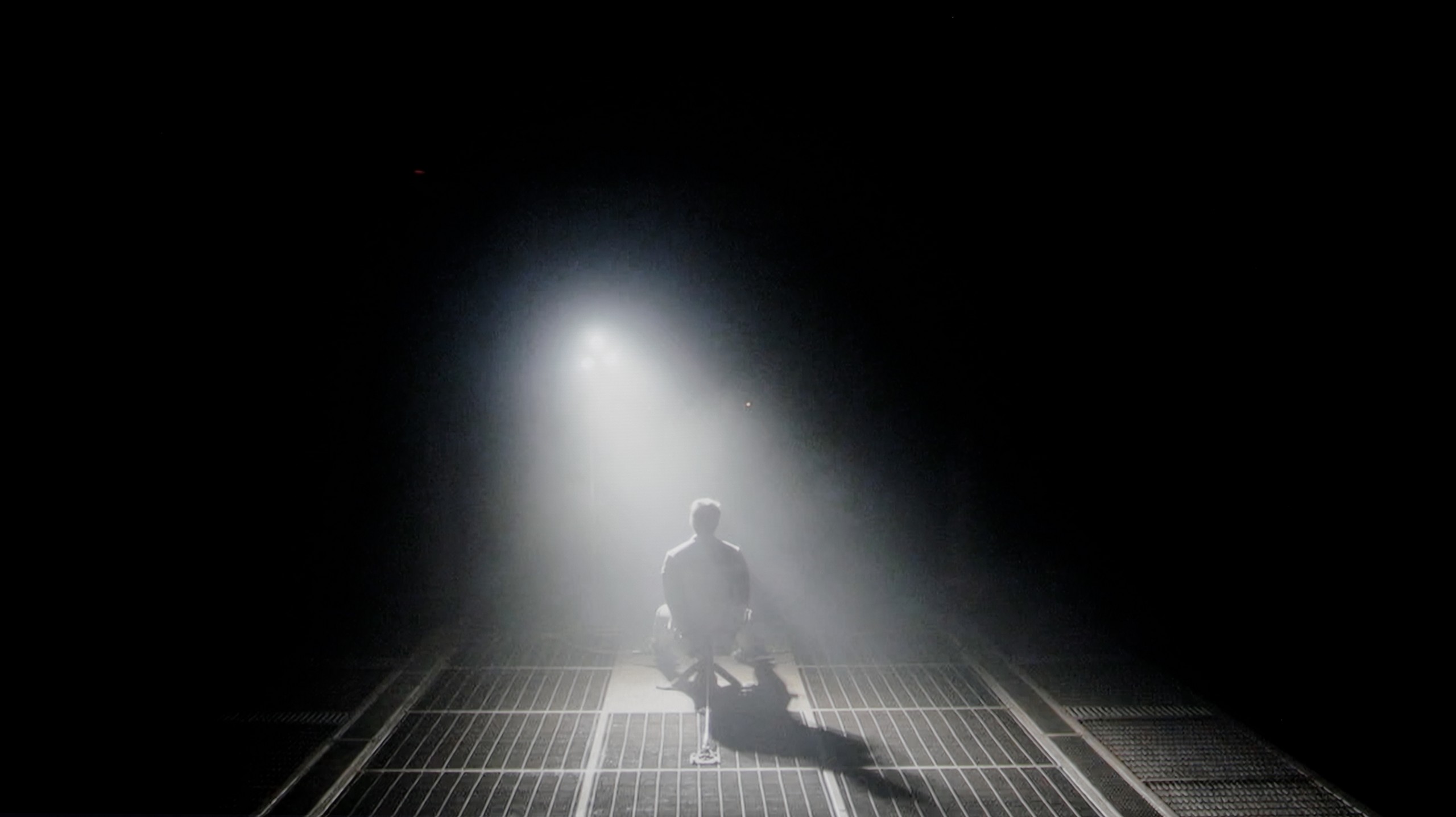
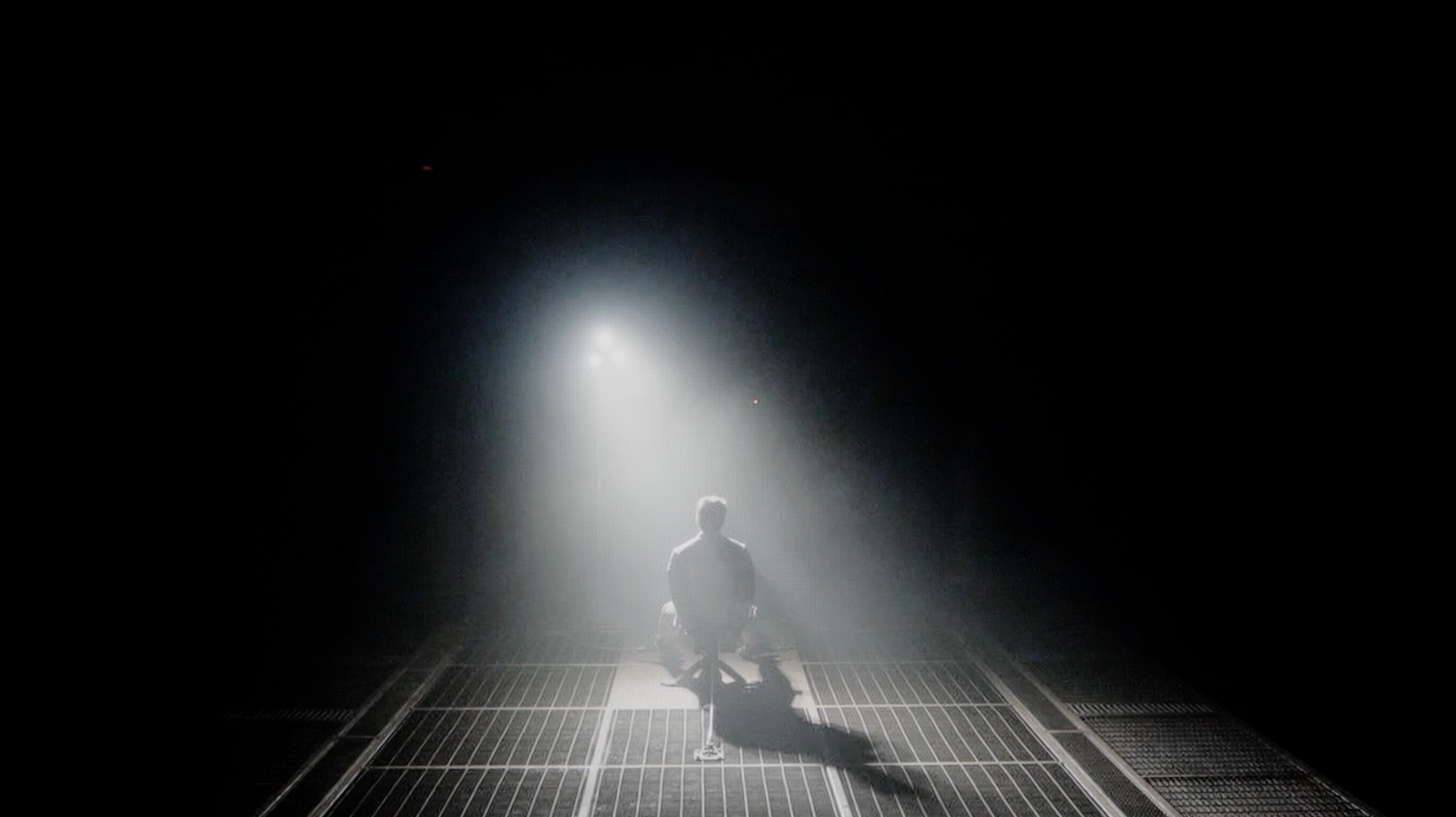
Samsung S85F in the 55-inch version has something special – it features a QD-OLED panel. This might sound quite surprising, but that's the fact, at least in Poland. So the question arises: is the difference compared to last year's S85D with a WOLED panel even noticeable? Yes, although in this specific test – black levels and contrast – it practically makes no difference.
Regardless of the scene, the S85F presents infinite contrast and perfect blacks that we expect from any OLED. These results can impress even the most demanding film enthusiasts. It's worth remembering that only TVs with organic panels can provide such deep blacks – and it doesn't matter whether it's WOLED or QD-OLED. So if you dream of a screen that can 'turn off' the light in a scene just as effectively as a boutique cinema in a dark room, the S85F is one of those TVs.
When it comes to black and contrast, we must be honest – this is the area where the differences between QD-OLED and WOLED panels are virtually non-existent under typical cinema conditions. We can state with full responsibility: the Samsung S85F equipped with a WOLED panel achieves incredible and unparalleled results in this aspect. No matter what scene you’re watching – whether it’s a dynamic action movie or a dark thriller – we get the infinite contrast and perfect black that we expect from any OLED television. These are results that can impress even the most demanding movie enthusiasts. It’s worth highlighting that such deep, absolute blacks can only be offered by televisions with organic panels. Under cinema conditions, as seen in our measurements, the luminance level of black is zero. So if you dream of a screen that can "turn off" the light in a scene just as effectively as an arthouse cinema in a dark room, we are pleased to state that the S85F, also in the WOLED variant, is one of those televisions.
HDR effect quality
6.2/10
5.9/10
Luminance measurements in HDR:

Result
666 nit

Result
703 nit

Result
742 nit

Result
732 nit

Result
433 nit

Result
672 nit

Result
673 nit

Result
718 nit

Result
670 nit

Result
276 nit
Scene from the movie “Pan” (about 2800 nits)


Scene from the movie “Billy Lynn” (about 1100 nits)


Static HDR10


Dynamic: HDR10+
Dynamic: HDR10+


HDR luminance chart:
Samsung S85F (WOLED)
HDR luminance
Luminance of RGB colors
Samsung S85F OLED
HDR luminance
As an OLED, the Samsung S85F can shine – literally. In favourable conditions, it can generate brightness exceeding 750 nits. This is significant because most films are created with displays aiming for around 1000 nits. In practice, this means that in scenes with moderately large, bright elements, the picture can look absolutely stunning. However, it's not always so rosy. When an enormous amount of light appears on the screen – whether it's an expansive, bright background or an entire frame filled with white – the S85F must tone it down. Brightness can drop by even four times in such scenes. This limitation is well-known to anyone familiar with OLEDs in this price segment, so we don't view it as a particular fail. However, something that deserves praise is what sets this model apart from the competition – colour gamut coverage. Thanks to the QD-OLED panel, our colour meter indicated values exceeding 100% coverage of DCI-P3 and an impressive 86% for the ultra-wide BT.2020 palette. Such results are hard to find even in televisions that cost several times more.
For most of the time, let's say in 90% of film scenes, viewers will hardly see any difference between the S85F versions. When small but very bright light points appear on screen – a lantern in a dark alley, a gunshot, the sun breaking through the clouds – this WOLED panel (just like the smaller S85F) performs exceptionally well. Our measurements showed a peak brightness of around 750 nits. We can confidently state: this is a great result that guarantees fantastic HDR effects. The problem arises in a very specific, uncomfortable situation for any OLED. We're talking about the moment when the entire screen has to shine at full brightness clearly. Examples include a white background screen, a skiing scene, or our test sequences (5) from the film The Meg. And here, unfortunately, the results diverge quite significantly against the WOLED panel variant. Our measurement equipment was able to measure a maximum of around 250 to 300 nits of brightness under such conditions. To be clear: the same model on a QD-OLED panel in the same test is almost twice as bright. The second issue: colours. And here we also have to be honest – QD-OLED has a structural advantage. Why? It’s simple. QD-OLED creates colours from three components (red, green, and blue) and doesn’t need an additional white subpixel. The WOLED panel we’re testing here uses that white subpixel, mainly to boost overall brightness. The effect is that QD-OLED is able to display a slightly wider colour palette, and the colours are a bit "cleaner." But let’s be clear: it’s not that the colours on this WOLED panel are bad! Quite the opposite, they are really very good. Coverage of the DCI-P3 film colour gamut at 97% and 71% for the wider BT.2020 palette is still high-end. We just have to honestly admit that those few percentage points of coverage advantage lie with QD-OLED technology and may be noticeable in very specific moments.
Factory color reproduction
5.5/10
5.5/10


Factory Mode
After calibration
Samsung, as befits a manufacturer with ambitions, has equipped the S85F with a mode called Filmmaker. Its task is simple: to make the colours on the newly purchased television as faithful as possible to what the director intended to show us. Sounds great… but, as is often the case, a theory that sounds wonderful doesn’t always translate into perfect practice.
In the tested unit, it quickly became apparent that the image – due to an excess of blue and red – looked as if someone had gone a bit overboard with the saturation. As a result, there were quite significant colour errors, particularly in 4K content. On top of that, there was an issue with brightness – the S85F could brighten most scenes more than it should, stripping them of the intended mood.
Fortunately, Samsung televisions, including the S85F, offer an impressive number of settings for advanced calibrators. This means that we could see what this panel is really capable of when it gets into the right hands.
When it comes to factory colour reproduction, our test unit in SDR mode suffered from a slight deficit in red and yellow. This resulted in a subtle yellowish tint visible in shades of white. However, this is not the biggest issue with the S85F. Similar to the QD-OLED panel variant, the main problem with this model is the way it presents HDR content. When we look at the EOTF curve graph, it’s easy to see that the TV has quite significant issues with strong image over-brightening. This results in the final image becoming very unnatural in many scenes.
Color reproduction after calibration
9.3/10
9/10




Thanks to the huge number of settings in the menu, we managed to bring the S85F almost to perfection. White balance in SDR content? Literally perfect – deviations do not exceed a value of "1". So we can confidently say that in materials with not too high dynamics, we have an image that's close to reference.
In HDR content, minor issues appeared, but they don't have much significance in practice – most errors fall below the threshold of perception, which is a value of "3". We also managed to tame the S85F when it comes to brightness management – the EOTF curve, even in films, holds nearly perfect straight line. This is one of those cases where after calibration, you can comfortably forget about the settings and simply watch movies and series at the highest level.
After conducting calibration in Filmmaker mode, we managed to eliminate most unwanted effects. In SDR content, the TV performs exceptionally well, and its colour reproduction errors do not exceed a value of 2, which is an outstanding result. The HDR content looks a bit worse, though still very good. Although we managed to eliminate a significant unnaturalness of the image caused by an overly high EOTF curve, the most discerning observers may notice that it is not perfectly aligned. It runs slightly below the reference curve, which would suggest that the S85F has minor issues in displaying all details in the image. We must immediately point out that it is highly unlikely for the average viewer to notice any deficiencies in the picture. We assess the final result after calibration as exemplary.
Smoothness of tonal transitions
8.5/10
7.3/10





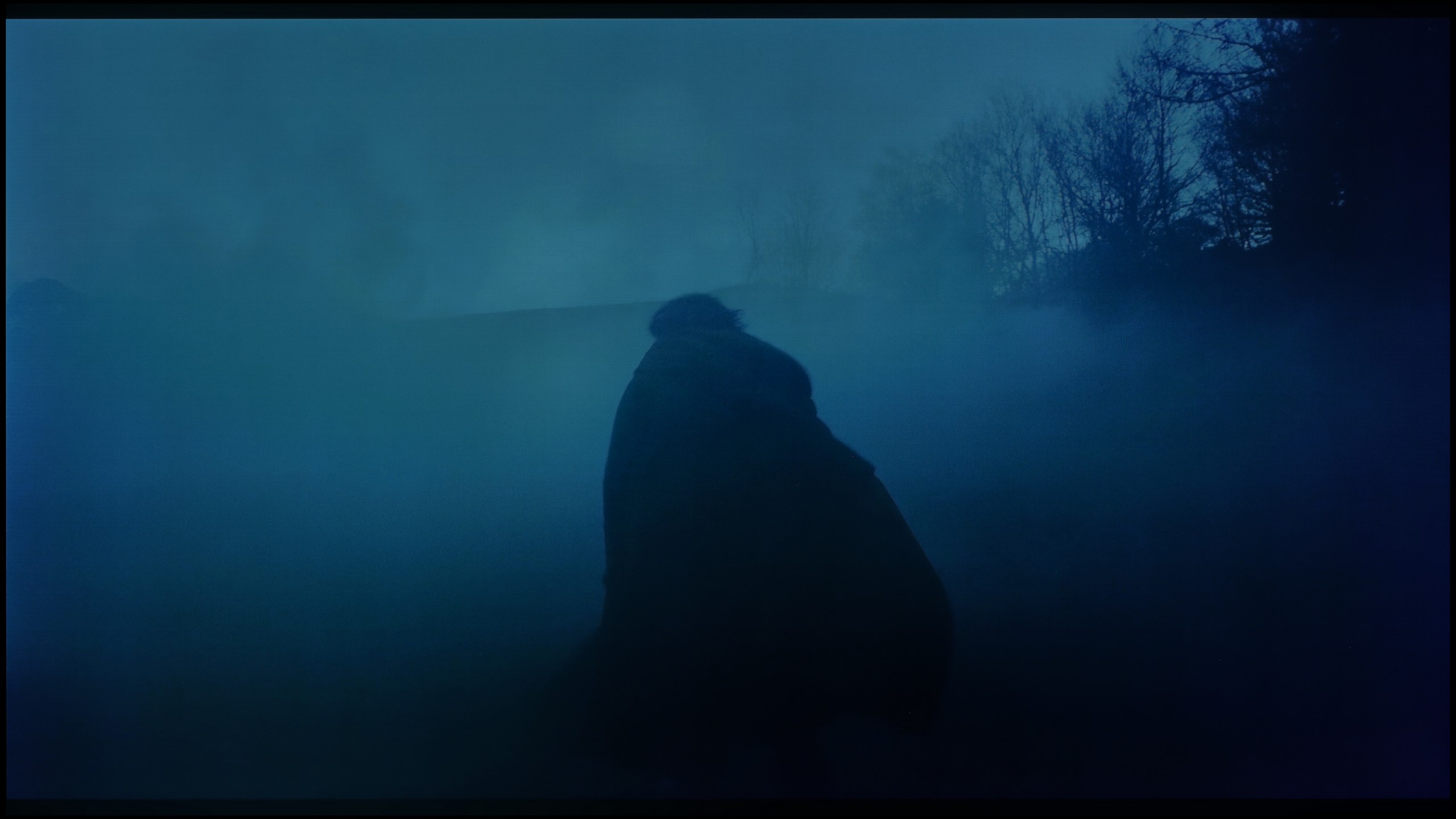






Thanks to the QD-OLED panel, colour blending on the S85F is really very good. It's particularly worth noting how it performs in the darkest, most demanding scenes – where most TVs start to struggle, this model operates almost perfectly.
Interestingly, a slight stumble can be noticed in those easier, brighter shots. There is minimal colour banding, but it's so subtle that it's hard to believe it would genuinely bother anyone during viewing.
Another issue with the S85F version featuring the WOLED panel, noticeable compared to the QD-OLED variant, is the quality of fluidity in tonal transitions. In very bright moments, it's evident that the colour blending is not perfect, and sometimes it can be seen with the naked eye. While the overall quality of gradients is still good, certain flaws of the panel produced by LG Displays become apparent, which are not as visible in competing panels (QD-OLED).
Image scaling and smoothness of tonal transitions
7.5/10
7.5/10
Smooth transition function
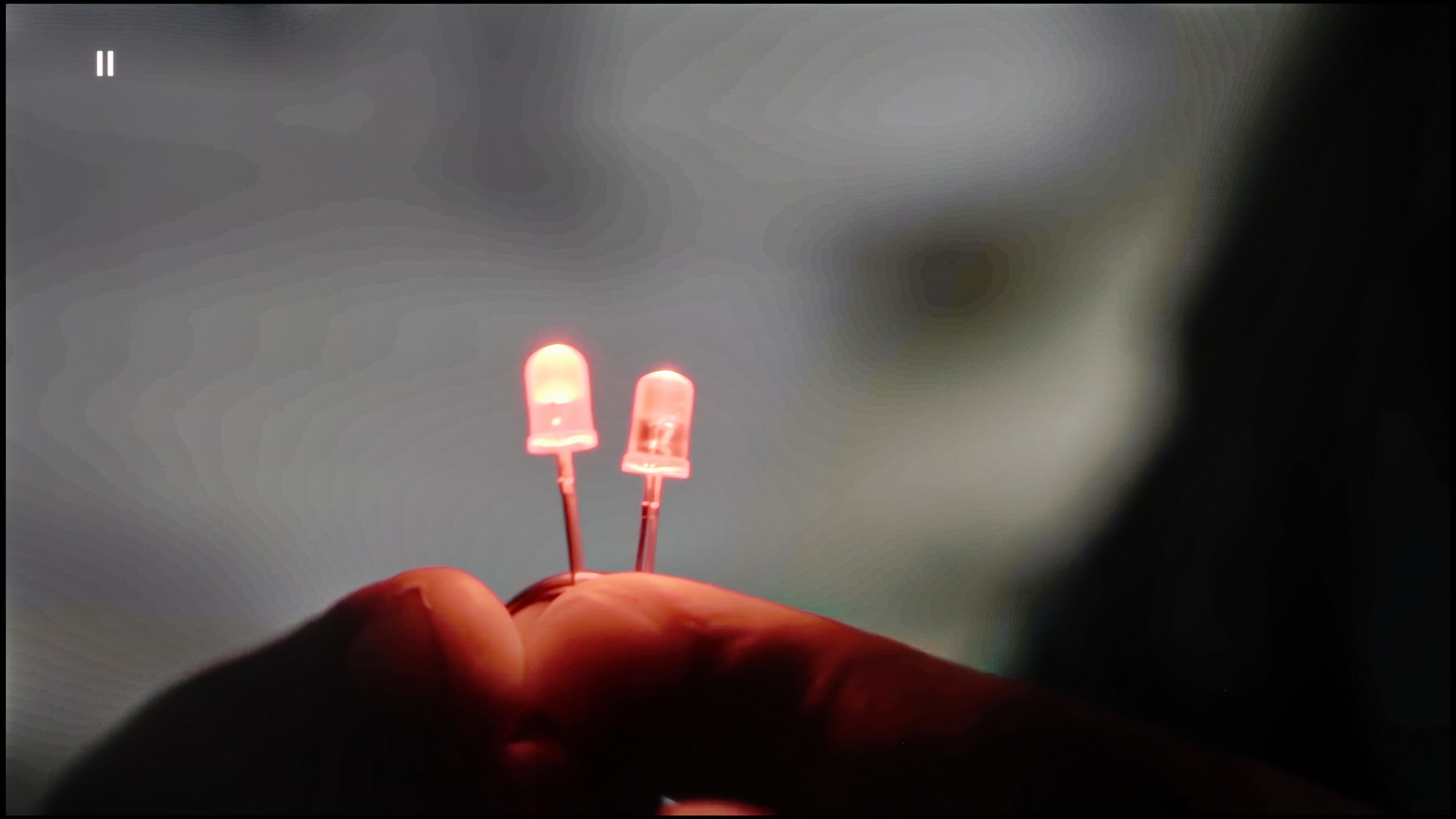
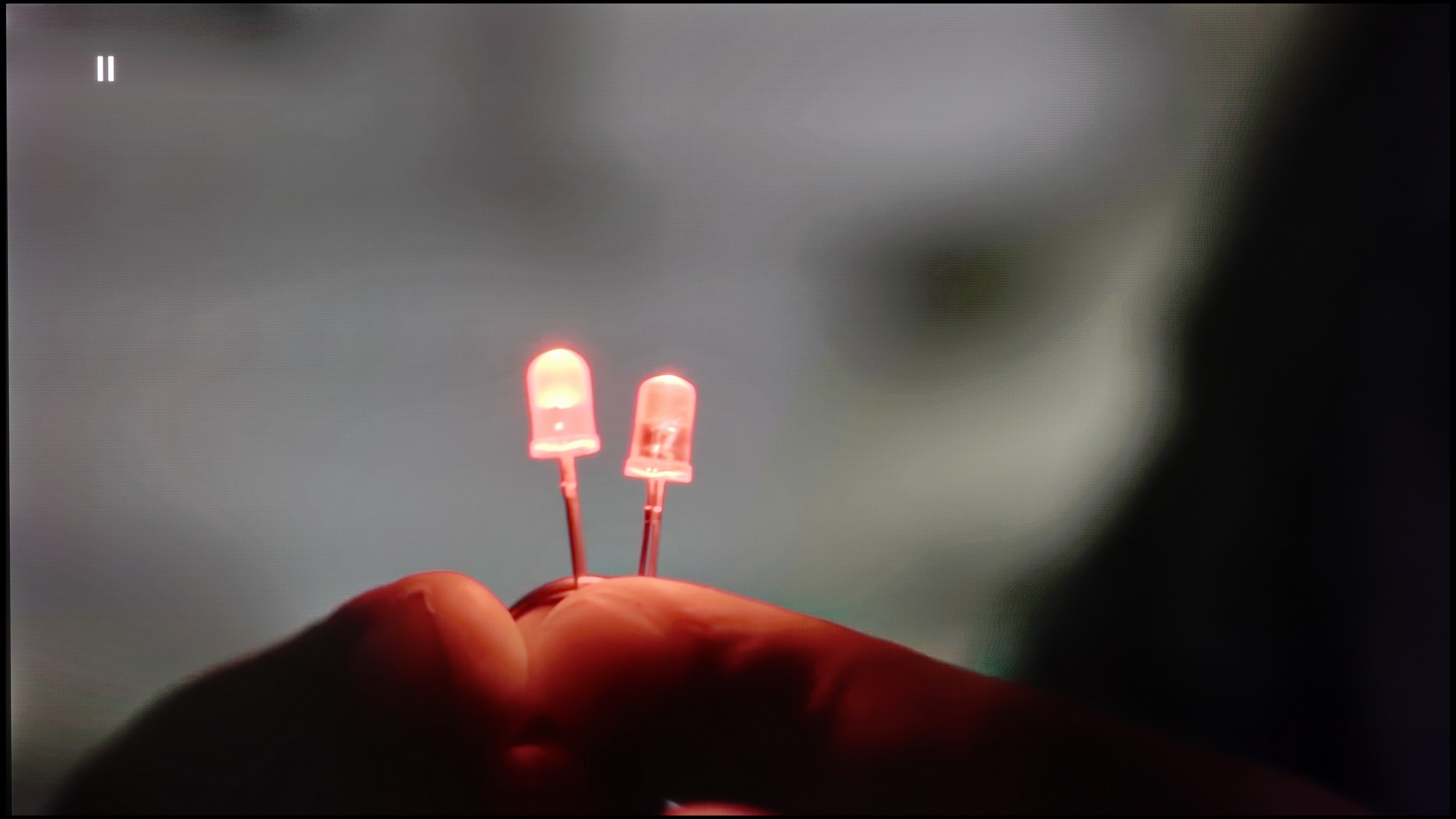
Image without overscan on the SD signal


The tone transition smoothing function in the S85F works really effectively – it can completely eliminate the problem of visible banding in very poor quality material, such as from YouTube. Unfortunately, even the lowest level of this option comes with compromises. The noise reduction is so aggressive that it can smooth out film grain, which many of us consider to be an element of the cinematic atmosphere. At the “Standard” level, we didn’t notice this function removing anything significant from the image, so we can recommend this setting. On the other hand, the “High” level is a different story – it can smooth out not just noise, but also small, desirable details like, for example, the texture of objects.
When it comes to image scaling, the S85F performs very well. The material looks sharp, and the only slight imperfection is the barely noticeable aliasing of edges. And there’s the ongoing issue with Samsung televisions – overscan. This can cause some scenes to be slightly cropped, which is worth noting when watching very old content.
The processing of tonal transitions (gradients) in the S85F is at a high level. The television effectively handles posterization (the "stepping" effect of colours), even with heavily compressed content, for example, from streaming services. However, using this feature requires a certain compromise. We noticed that the noise reduction algorithm is quite aggressive – even at the lowest setting, it can eliminate the natural film grain, which for many viewers is part of the film's aesthetics. The "Standard" setting seems to be a golden mean, without causing a noticeable loss of important details, so we can recommend it. However, we advise against using the "High" level, which, in addition to noise, also removes desired details such as texture or the structure of objects on the screen.
The upscaling process of lower resolution content works very well in the S85F. The image is sharp and clear. The only minor imperfection we managed to observe is occasional slight aliasing on the edges. The television still displays characteristics typical of this manufacturer, namely active "overscan" (a slight image enlargement). This should be kept in mind, especially when watching older content, as it may result in minimal clipping of the original frame.
Blur and motion smoothness
8.5/10
8.5/10
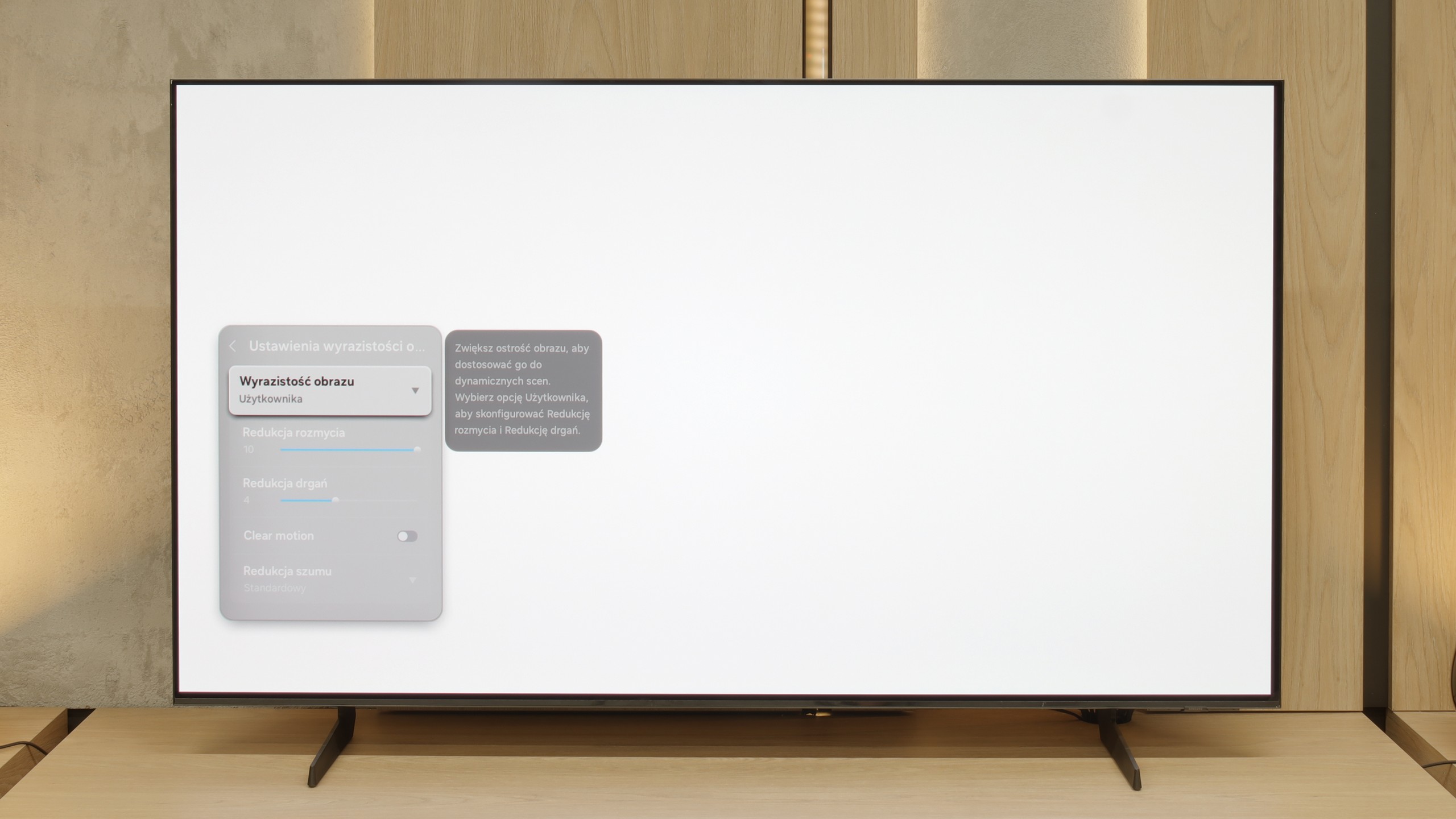
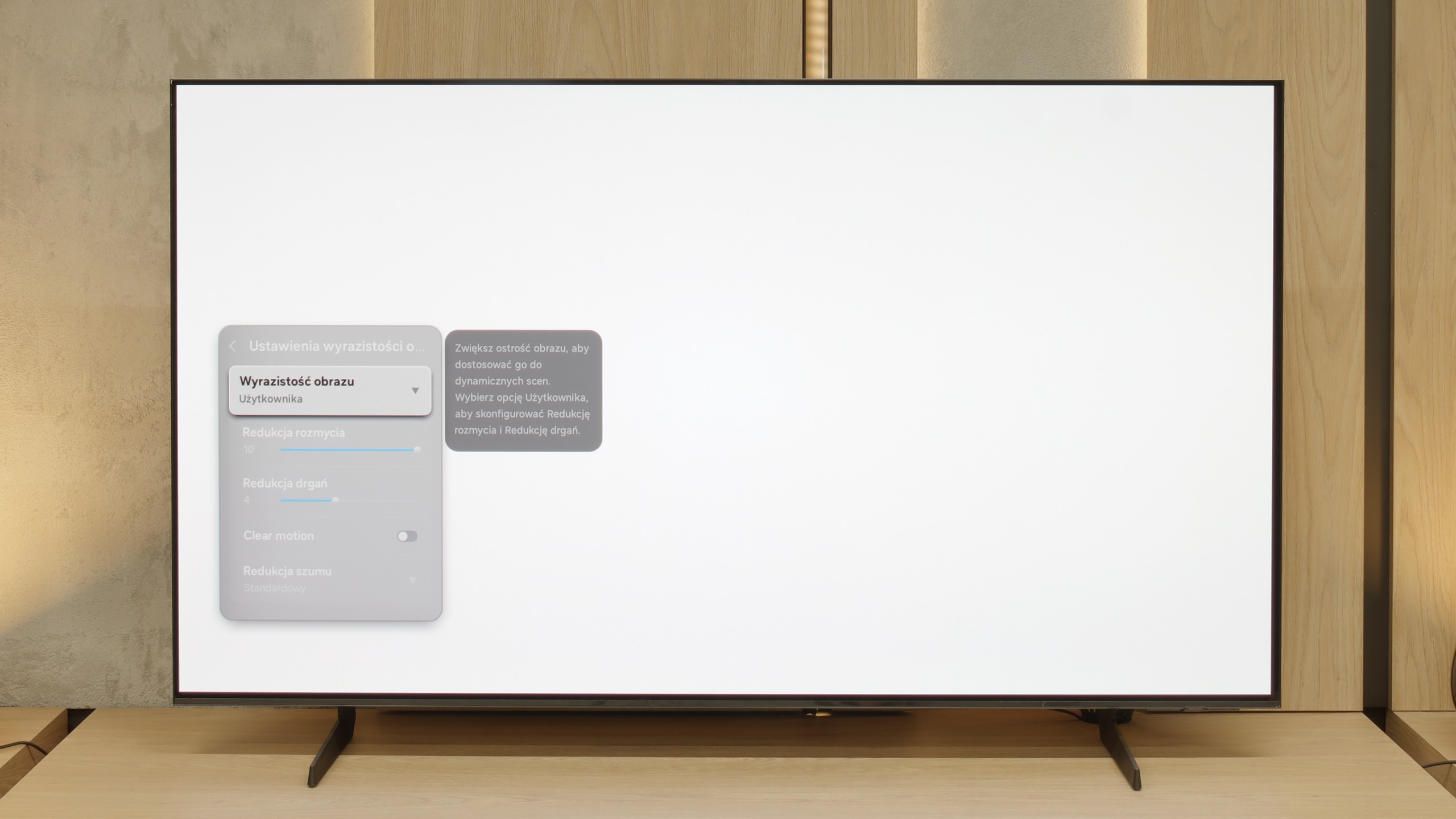
Blur (native resolution, maximum refresh rate):






Blur (BFI function enabled):
Image flickers in this mode



Image flickers in this mode



Smużenie (4K@60Hz Game Motion Plus):



Smużenie ():
S85F is an incredibly fast television – and that’s not just empty hype. Thanks to the 120 Hz OLED panel, dynamic scenes, whether in games or while watching a live match, look just as they should – smooth, sharp, and without the feeling that something is "slipping" out of frame. The lightning-fast pixel response time, typical of OLEDs, plays a big role here. Transitions between frames are virtually instantaneous, and the image remains clear even during the fastest camera movements. A ball flying across half the field? A car speeding in a chase scene? Everything here is clear and free of the typical "trail" associated with LCDs.
This is exactly what we expect from a good OLED – zero compromises when it comes to motion smoothness. The S85F gives the impression that regardless of the pace of action, we can focus on what’s happening on the screen, rather than on the imperfections of the image.
S85F is a model with impressive speed. The use of a 120 Hz OLED panel ensures that dynamic scenes, both in games and during sports broadcasts, perform as expected: smoothly, sharply, and without loss of clarity. A key role here is played by the lightning-fast pixel response time, which is a natural advantage of OLED technology. Transitions between frames are instantaneous, and the image remains clear even during the fastest camera movements. Moving objects, like a ball on the field or a car in a chase scene, are clear and free from the characteristic smearing of LCD panels (so-called "trail").
Console compatibility and gaming features
8.2/10
7.8/10
- ALLM
- VRR
- VRR range48 - 120Hz48 - 120Hz
- Dolby Vision Game Mode
- Correct implementation of HGIG
- 1080p@120Hz
- 1440p@120Hz
- 4K@120Hz
- Game bar
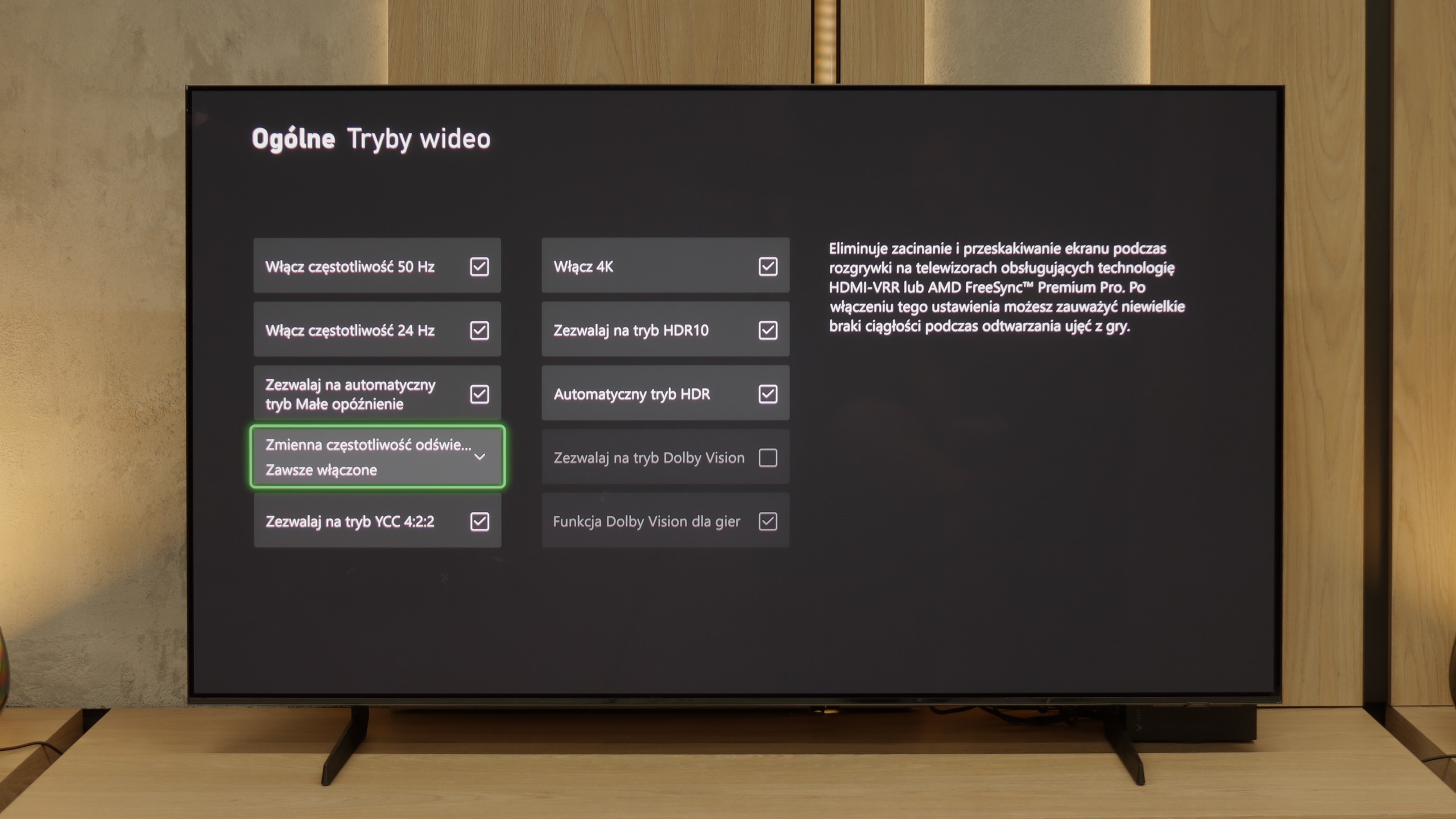
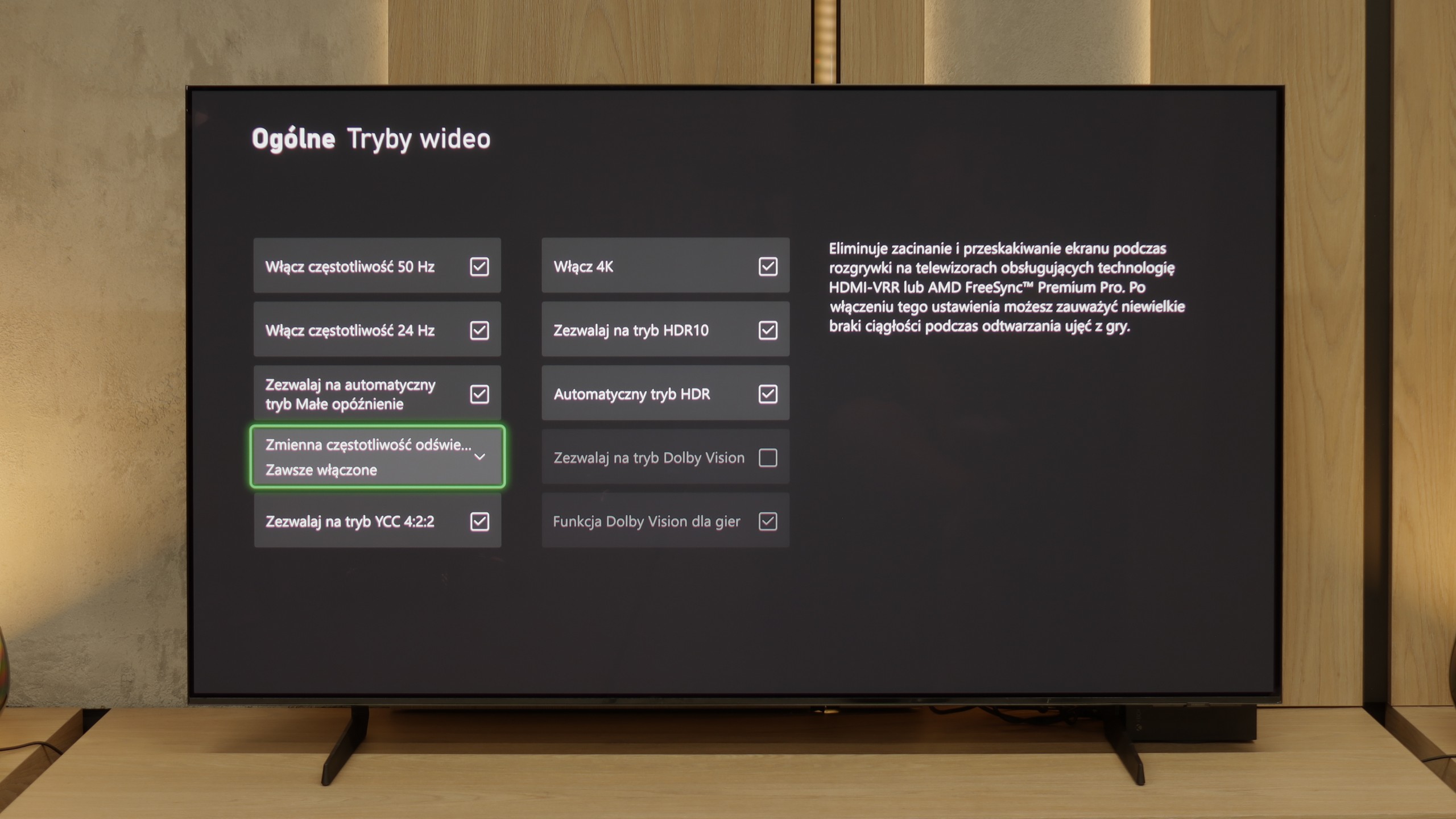
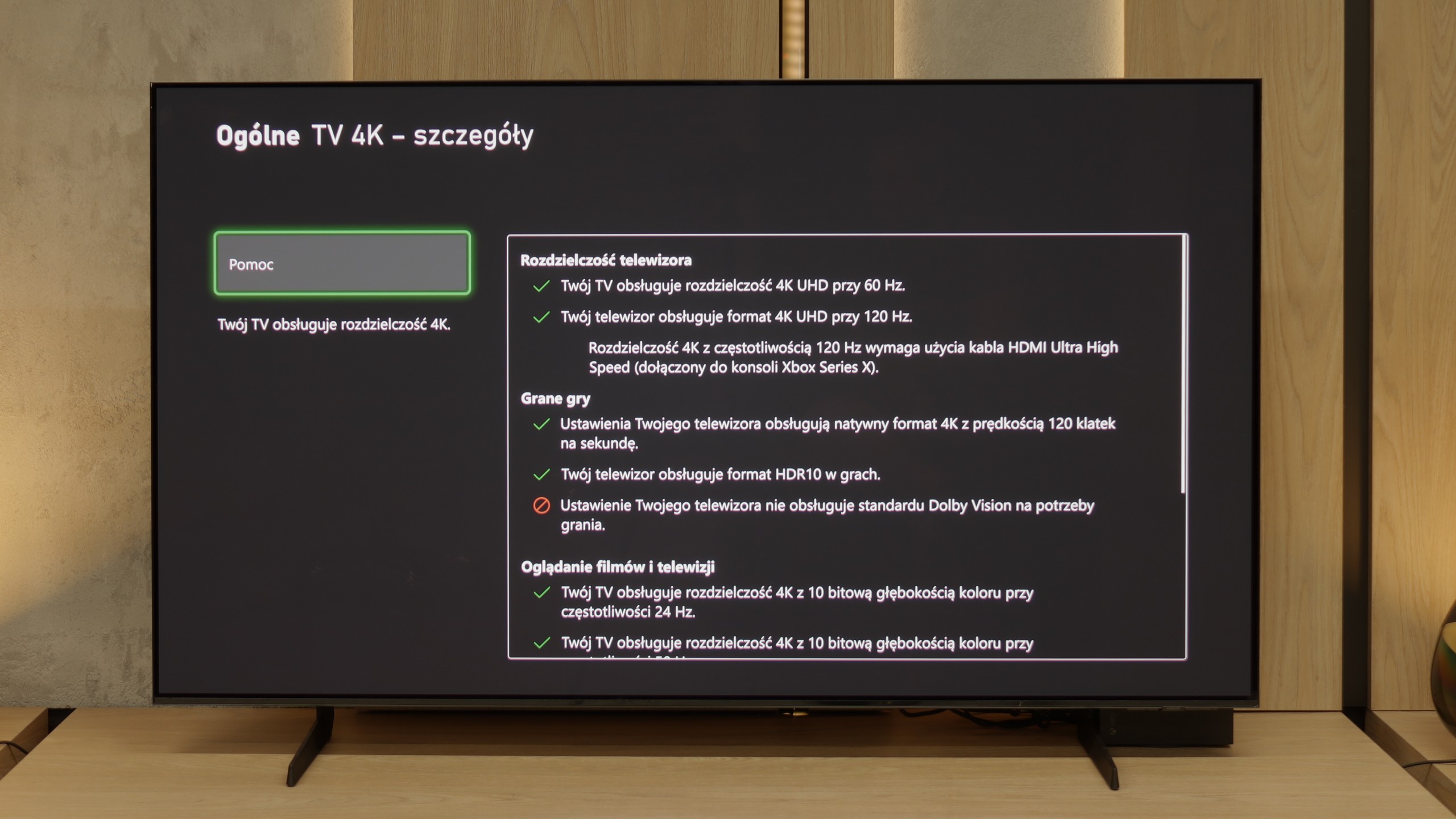
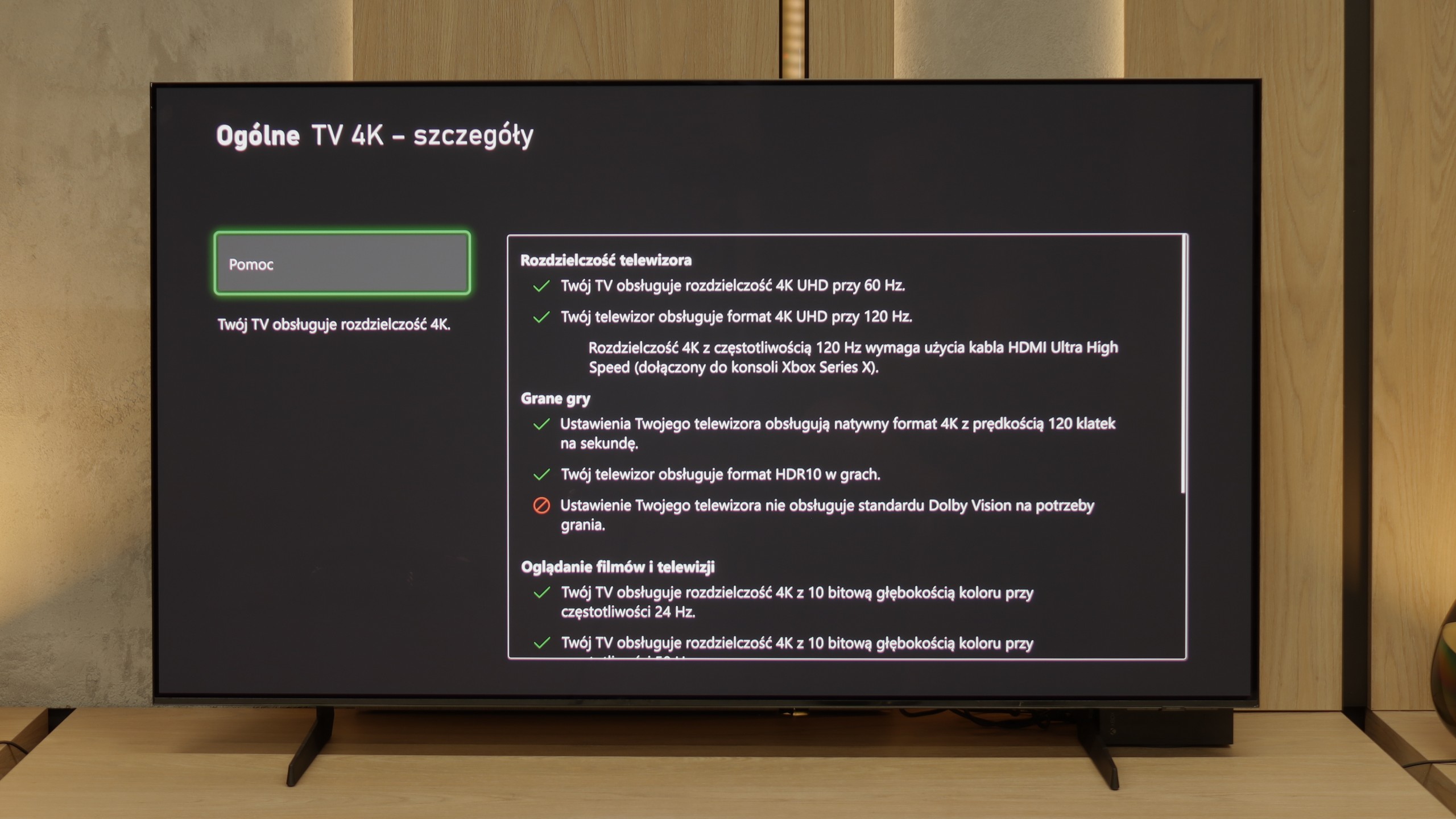
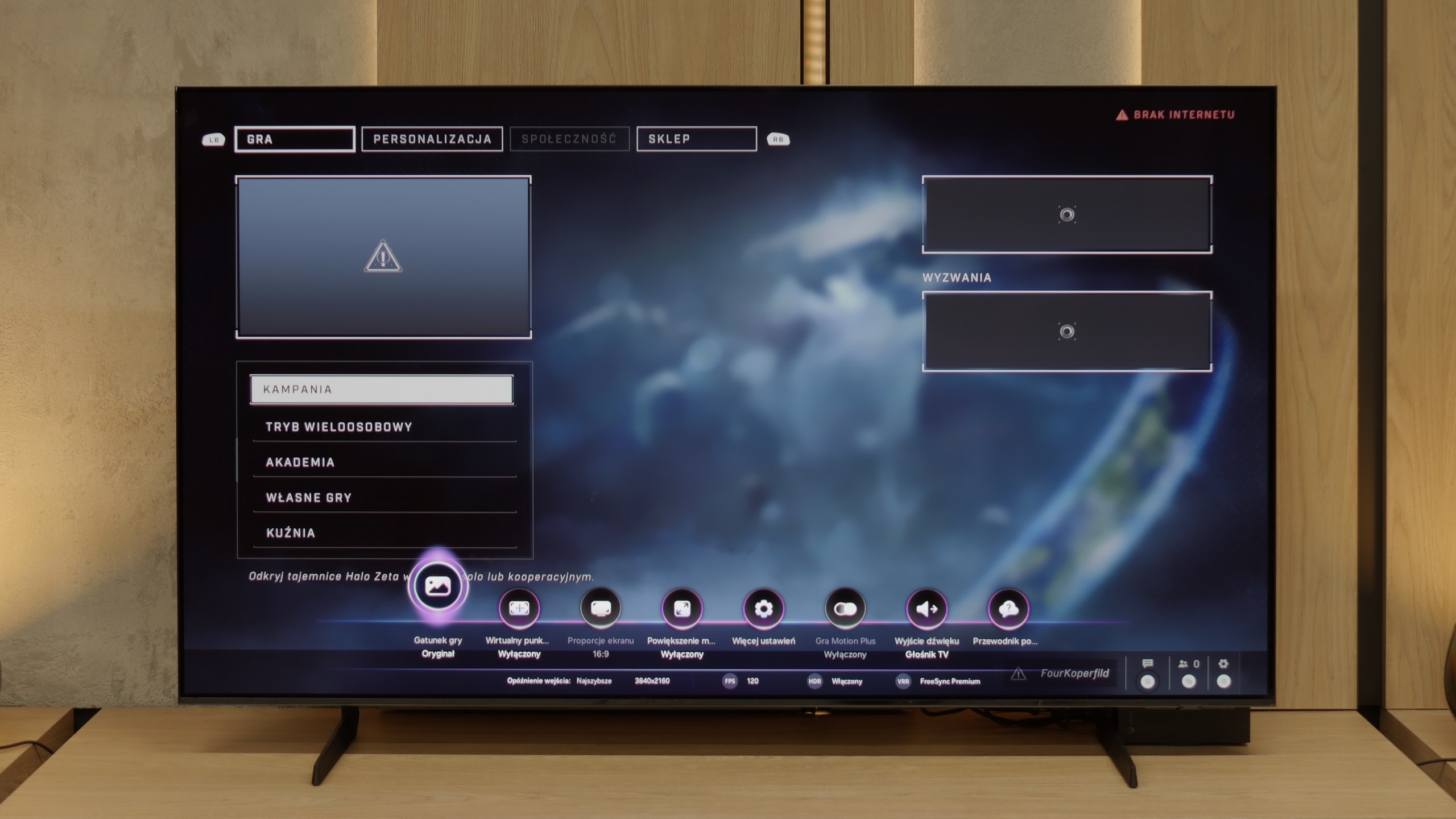
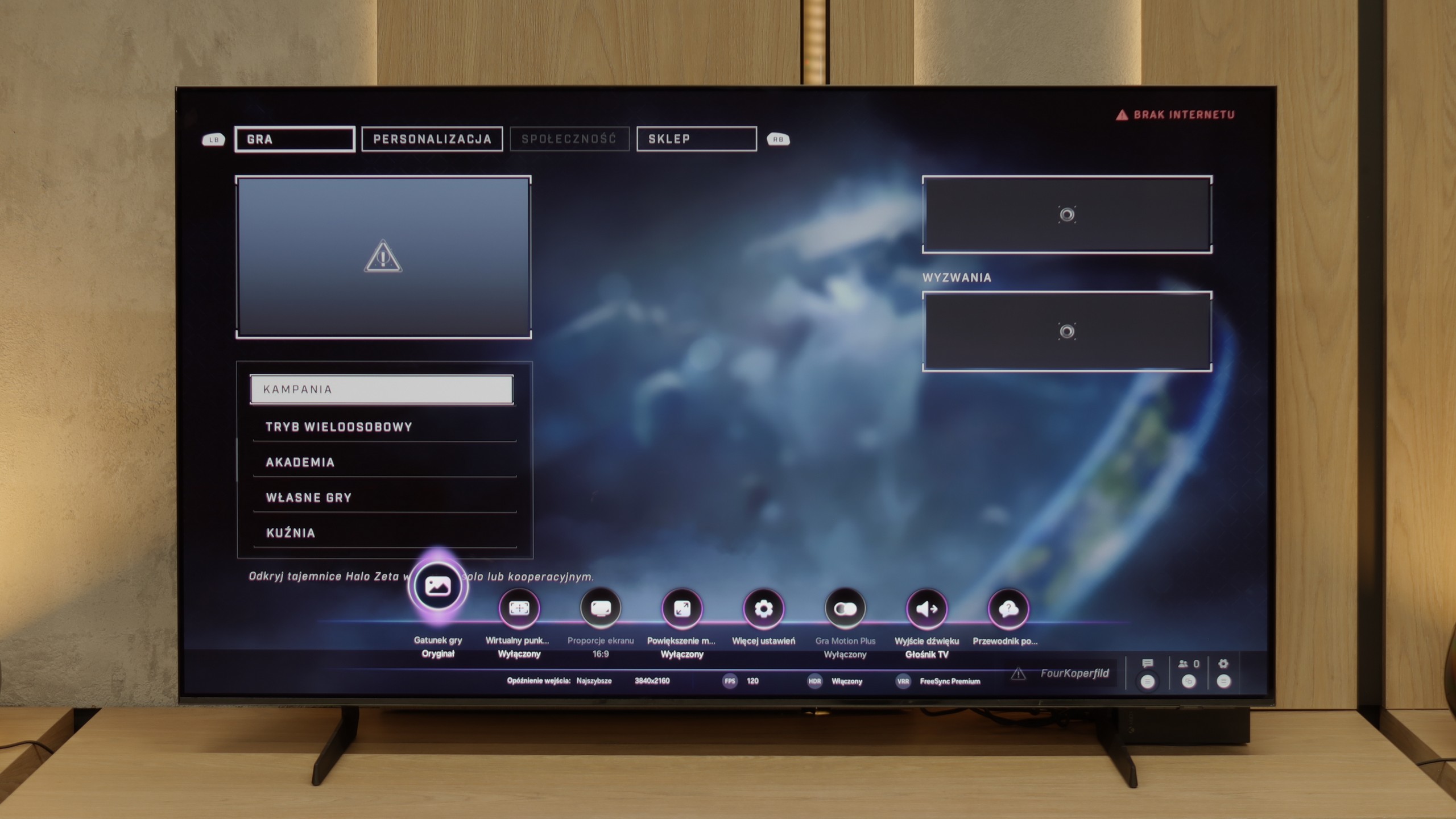

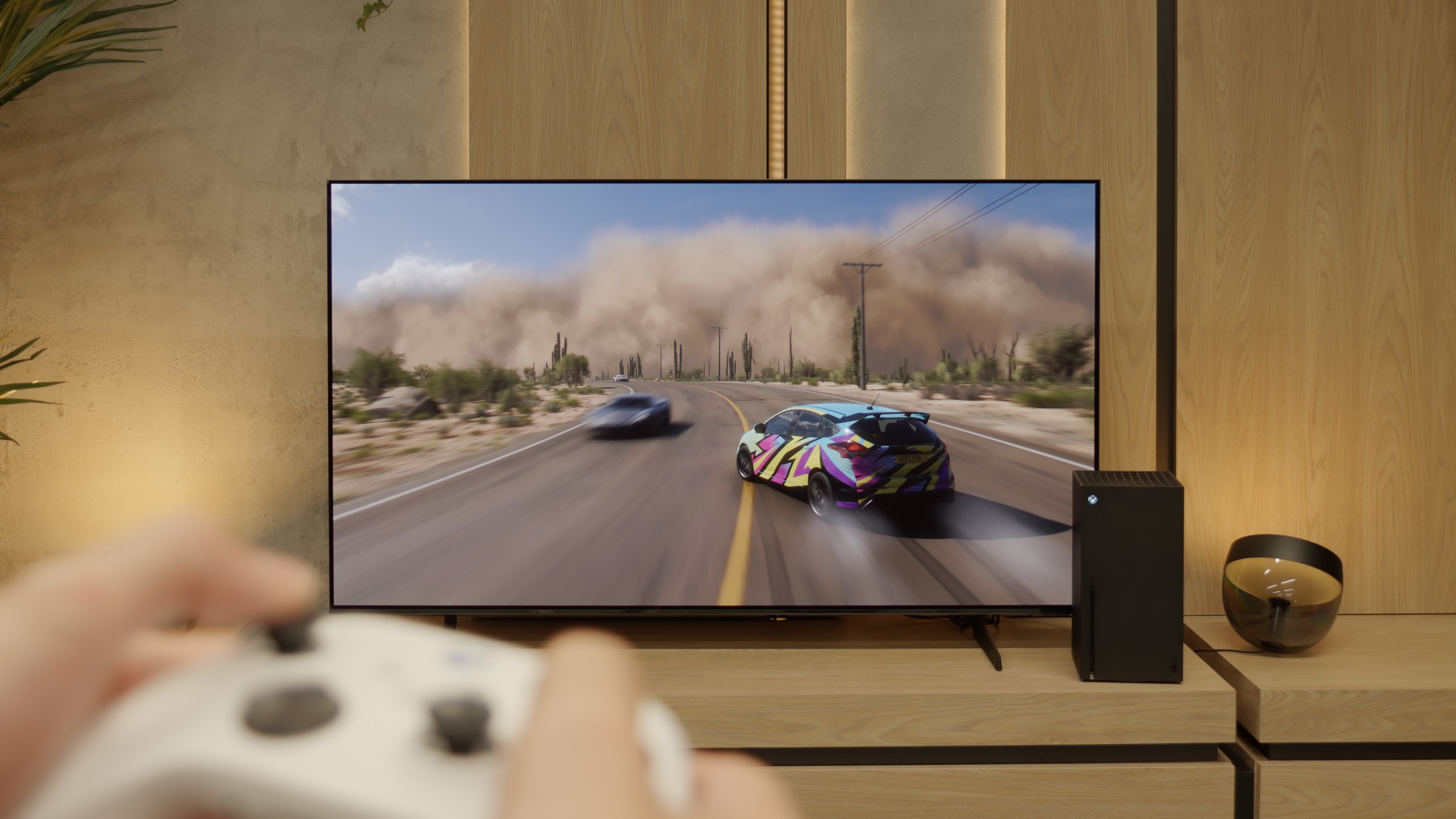
S85F has practically everything on board to become the dream screen for gaming. Four full HDMI 2.1 ports with a bandwidth of 48 Gb/s, support for VRR, ALLM, a super-detailed Game Bar that clearly shows all parameters – plus a gem in the form of Game Motion Plus. This motion smoother makes animation in games more enjoyable, while input lag increases slightly. It's a rare combination, and that’s a big plus for Samsung.
Perhaps Samsung will fix this in the next update – and we have high hopes for that. Because if HGiG comes back, the S85F will become nearly the perfect TV for gamers.
The 85F has practically everything on board to become the dream screen for gaming. Onboard, we find four full-fledged HDMI 2.1 ports with a bandwidth of 48 Gb/s, support for VRR (Variable Refresh Rate) and ALLM (Auto Low Latency Mode). Additionally, there's a super-detailed Game Bar that clearly displays all key parameters. However, the real gem is the Game Motion Plus feature. It's a motion smoother dedicated to games that makes the animation more pleasing to the eye while only slightly increasing input lag. This is a rare and well-functioning combination, for which Samsung deserves a lot of applause.
And now for the moment where we have to vent a little. The lack of Dolby Vision in Samsung TVs has become standard, so there's no point in holding out hope (unless something changes in the future). Unfortunately, it's much harder to explain the disappearance of support for HGiG after one of the software updates. HGiG (HDR Gaming Interest Group) is a key mode that allows for precise brightness reproduction in HDR games, according to the creators' intentions. Without it, HDR calibration on the console becomes less precise, which can leave us with an image that's too dark in the shadows or excessively bright in the light areas. Hopefully, Samsung will fix this in the next update – we have high hopes for that. Because if HGiG returns, the S85F will become almost the perfect TV for gamers.
Input lag
10/10
10/10
SDR
HDR
Dolby Vision
Here, dear gamers, the S85F shows its claws. 5 ms with 120 Hz content and around 10 ms with 60 Hz are results that can be described in one word in the world of televisions – phenomenal. This means that the response to our movements is practically instantaneous. We press the button, and the action on the screen happens without any delay, as if the television can read our thoughts. In dynamic games, where a fraction of a second can decide victory or defeat, such values make a huge difference. There's no question of a nervous "wait" for the image to catch up with our movements. The S85F gives us the feeling that everything is under our complete control – and that's how it should be in equipment that aspires to be the ideal screen for a gamer.
In this category, the S85F shows its true colours. The measured values – 5 ms for 120 Hz content and around 10 ms for 60 Hz – are results that can be described in one word in the world of televisions: phenomenal. This means that the response to player movements is practically instantaneous. Pressing a button on the controller results in action on the screen with no noticeable delay. In dynamic games, where a fraction of a second determines victory or defeat, such values make a huge difference. There's no question of a nervy "wait" until the image catches up with our commands. The S85F gives a sense of full control – and that's how it should be in equipment aspiring to be the perfect screen for gamers.
Compatibility with PC
7.6/10
7.6/10

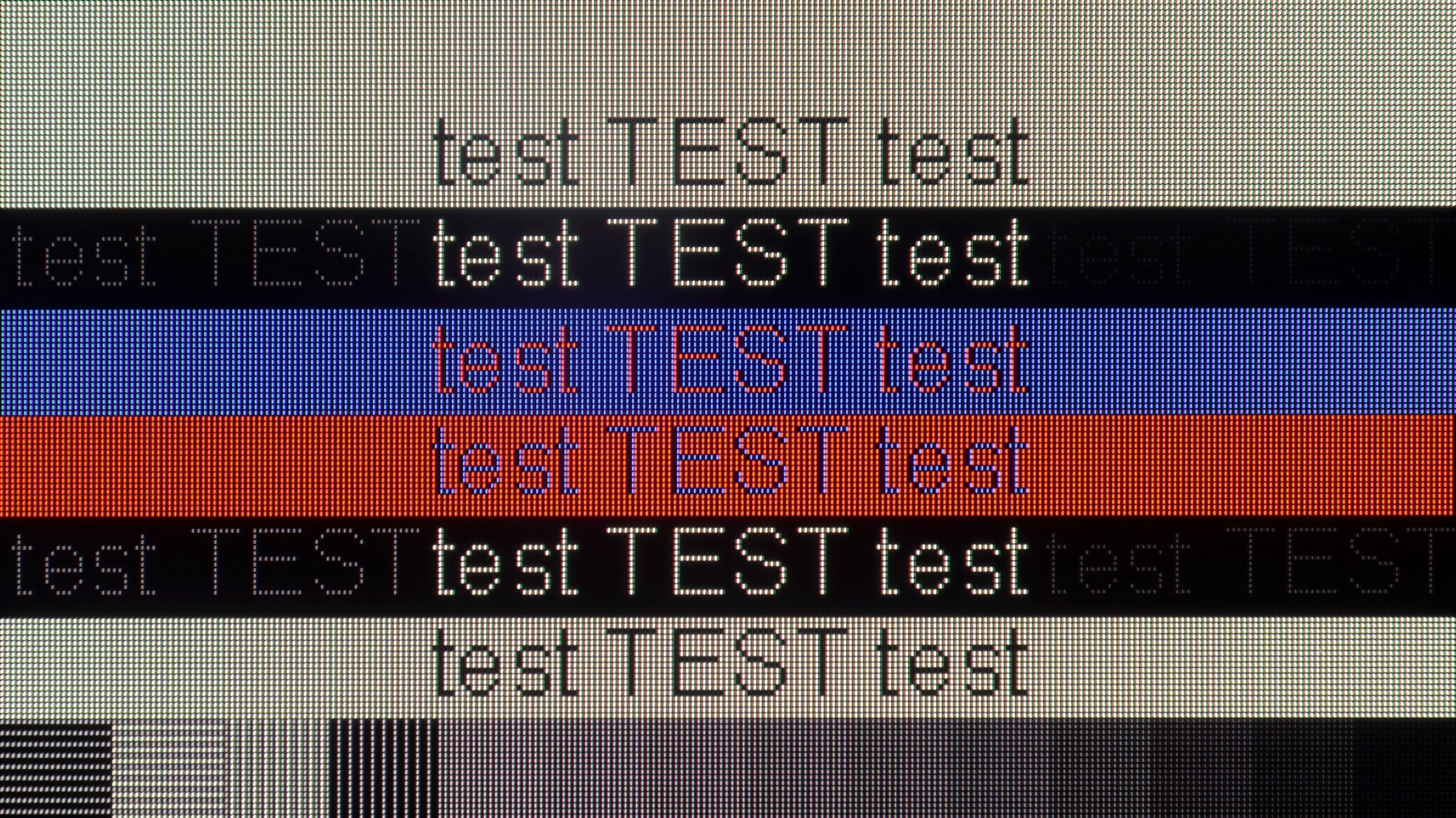
If you're planning to connect the S85F to a computer, we have good news – this television is perfect for that. Low input lag and a 120 Hz panel make gaming on PC a pure pleasure. Whether we're talking about dynamic shooters or more relaxed RPGs, the response is instantaneous, and the smoothness of the animation can draw you in for hours on end.
Of course, there’s no rose without thorns. Due to the diamond pixel layout in the QD-OLED panel, there is a slight "rainbow icon" effect, particularly noticeable when sitting close to the screen. Fortunately, this is more of a detail that most of you won’t mind in everyday use. Especially since, thanks to the proper implementation of 4:4:4 chroma, the readability of fonts is at a very good level – documents, websites, and text editors simply look as they should.
What about connecting to a computer? We’re quick to respond: the S85F excels in this role. The combination of lightning-fast input lag and a 120 Hz panel is the recipe for a great gaming experience on PC. Both fast-paced shooters and more leisurely RPG titles benefit from the rapid response and smooth animations, capable of captivating you for hours on end. Of course, it’s not perfect. We must mention the specific construction of the WOLED panel. It consists of four subpixels (WRGB), which is a different structure than the classic RGB found in monitors. As a result, if we sit very close to the screen, we might notice that fonts aren’t as perfectly sharp as we would like them to be. However, this is not a major issue and shouldn't be a bother in everyday use. Especially since the TV properly handles 4:4:4 chroma signal.
Viewing angles
9.8/10
7.5/10
Here, dear readers, the S85F reaches the absolute peak. The viewing angles are phenomenal – some of the best you can get in a TV today, and it’s thanks to the unique QD-OLED panel from Samsung Display. Of course, WOLED panels can also maintain a high level in this regard, but let’s not kid ourselves – what the QD-OLED shows in the S85F is even more impressive. Colours, contrast, and brightness remain practically unchanged even when viewing the screen from a very large angle. It’s the kind of television where you don’t have to fight for the “best spot on the couch” – everyone will see the picture in all its glory, no matter where they’re sitting.
As is typical for OLED technology, the viewing angles on the S85F are very good. The image maintains its properties even when viewed from the side, which is a clear advantage over most LCD televisions. However, we must note that it is not on the level known from QD-OLED panels. In the case of the tested WOLED panel, with considerable deviation from the screen axis, a slight drop in brightness and a subtle change in white shades can be observed. QD-OLED remains unmatched in this regard, offering nearly perfect picture quality no matter where we are looking at it from.
Daytime performance
5.1/10
5.3/10
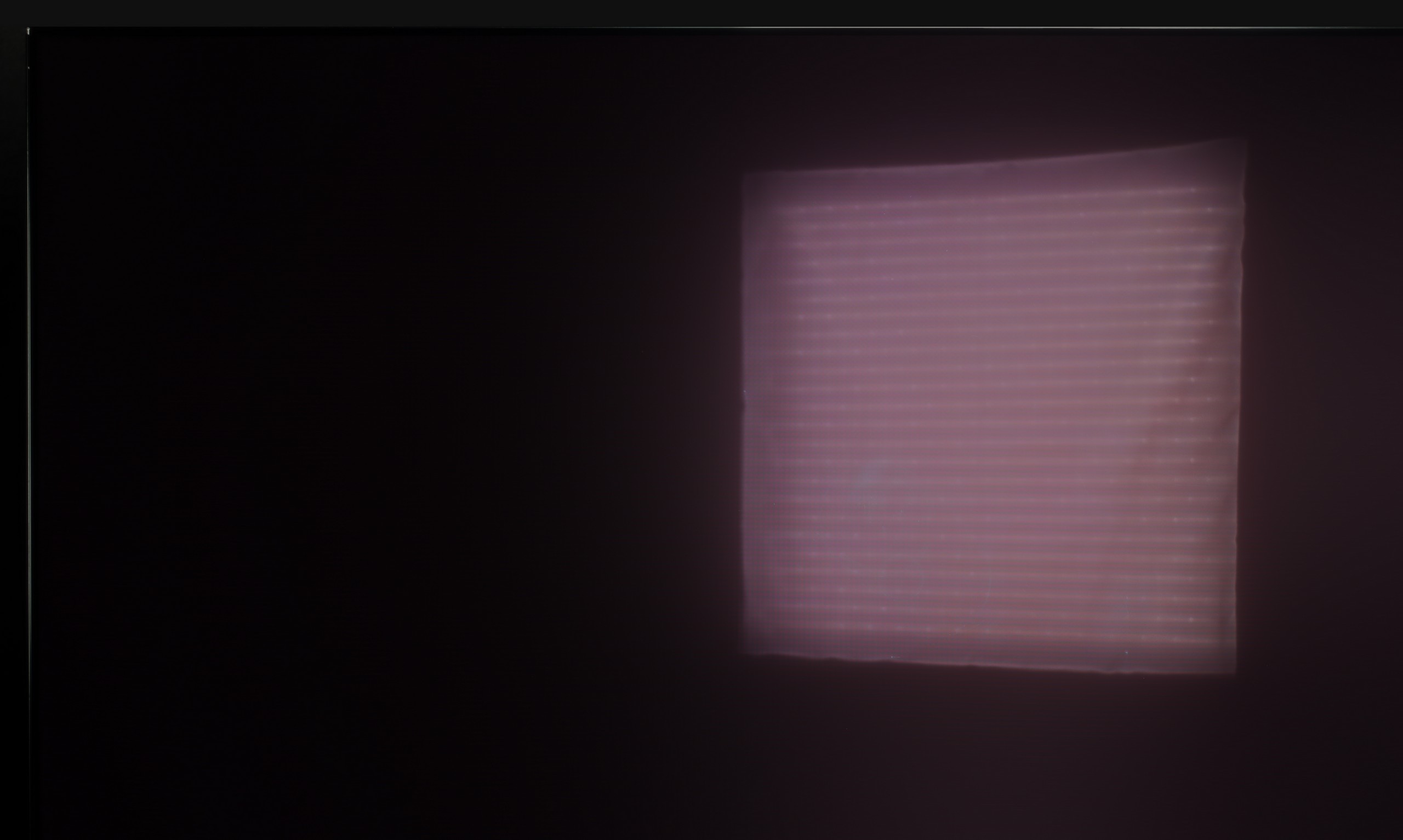
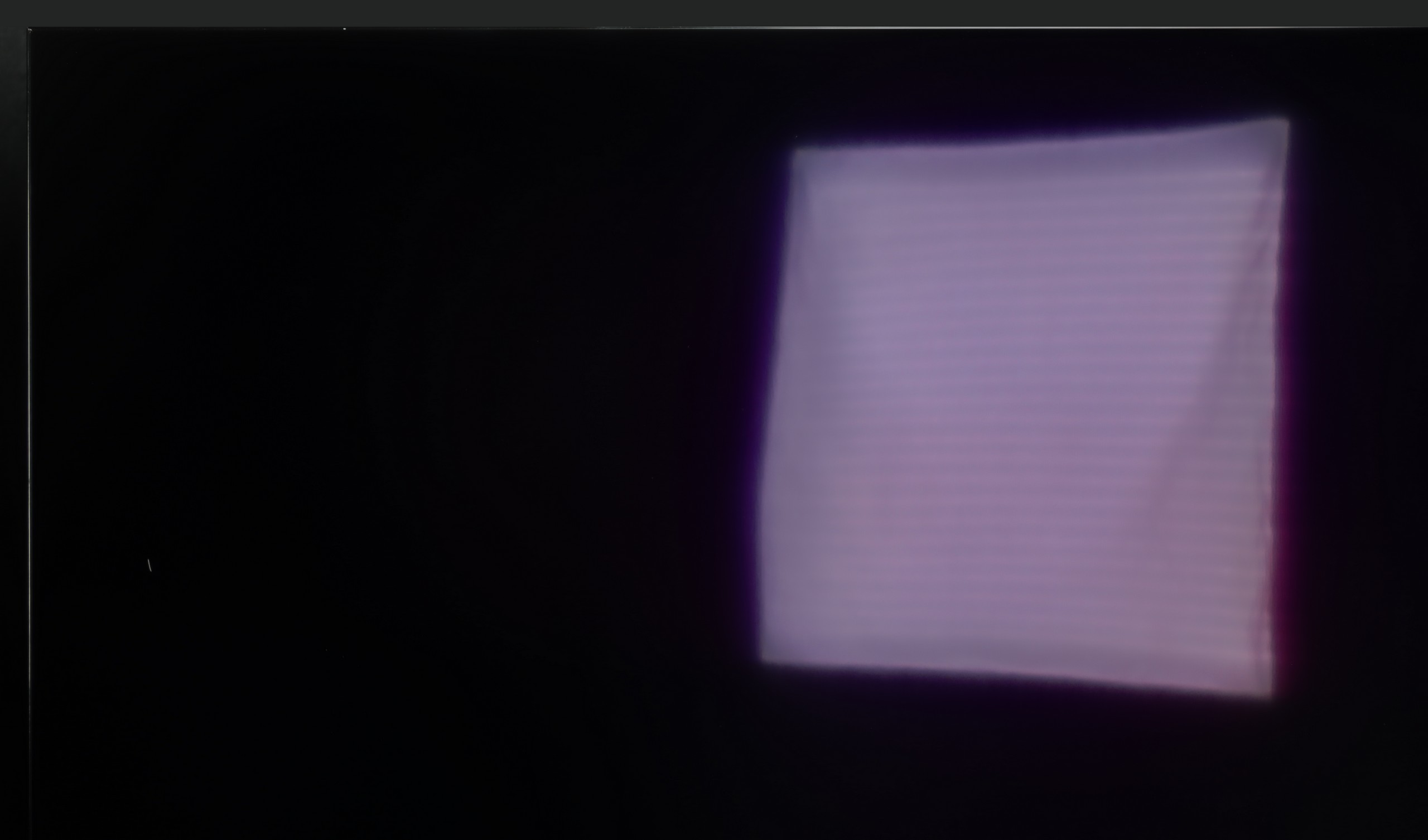


Panel brightness
Average luminance SDR
Samsung S85F (WOLED): 305 cd/m2
Samsung S85F OLED: 317 cd/m2
We really liked the saying "no rose without thorns," and it fits perfectly with QD-OLED TVs. Especially when we look at their performance in highly lit conditions. As you may notice, under very intense light, the surface of the panel can take on a slightly cherry hue. The effect is subtle in the case of the S85F, but in extreme lighting conditions, black can appear a bit worse than in WOLED panels. But – and this "but" is key here – QD-OLED suppresses direct light reflections much better. This means that reflections will be less bothersome, and the picture will retain clarity even when something bright reflects on the screen. You win some, you lose some.
As for brightness, the S85F is a moderately bright OLED. It’s not a model designed for extremely sunny living rooms. If you plan to place it in a very bright room, we recommend considering blinds or placing it in a location that at least partially protects it from direct light.
We must state clearly that working in a brightly lit room is not the strongest suit of the S85F. We are dealing with a moderately bright OLED panel here. Our measurements showed that the average brightness of the screen in "TV" mode hovers around 300 nits. For some users, this may be too low, especially in rooms with a lot of daylight. Of course, for moderately bright living rooms, this TV is perfect. However, it is not a model we would recommend for exceptionally bright, sun-drenched interiors. This issue is exacerbated by the anti-reflective coating used. We noted that it does not suppress reflections from the surroundings as well as the version with a QD-OLED panel, especially when direct sunlight hits the screen.
Panel details
Subpixel Structure:
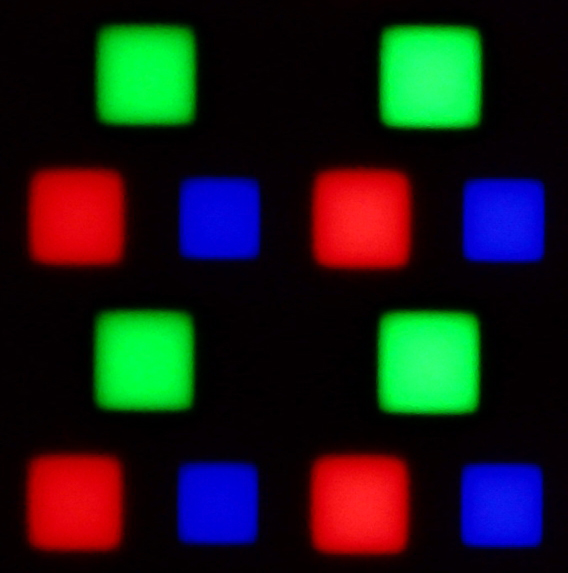
Panel uniformity and thermal imaging:


Samsung S85F OLED
Samsung S85F (WOLED)
TV features
7.3/10
7.3/10
- HDMI inputs0 x HDMI 2.0, 4 x HDMI 2.1 48Gbps0 x HDMI 2.0, 4 x HDMI 2.1 48Gbps
- Other inputsToslink (Optical audio)Toslink (Optical audio)
- OutputsToslink (Optical audio), eARC (HDMI), ARC (HDMI)Toslink (Optical audio), eARC (HDMI), ARC (HDMI)
- Network InterfacesWi-Fi 2.4GHz, Wi-Fi 5GHz, Ethernet (LAN) 100MbpsWi-Fi 2.4GHz, Wi-Fi 5GHz, Ethernet (LAN) 100Mbps
- TV receptionDVB-T, DVB-T2, DVB-S, DVB-S2, DVB-CDVB-T, DVB-T2, DVB-S, DVB-S2, DVB-C
Classic features:
- Recording to USB (terrestrial TV)
- Recording programming
- Picture in Picture (PiP)
- RF remote control (no need to aim at the screen)
- Backlit remote control
- Teletext
- Audio only mode
- Bluetooth headphones support
- Simultaneous Bluetooth headphones & TV audio
Smart features:
- AirPlay
- Screen mirroring (Windows Miracast)
- Voice search
- Voice search in native language
- Ability to connect a keyboard and mouse
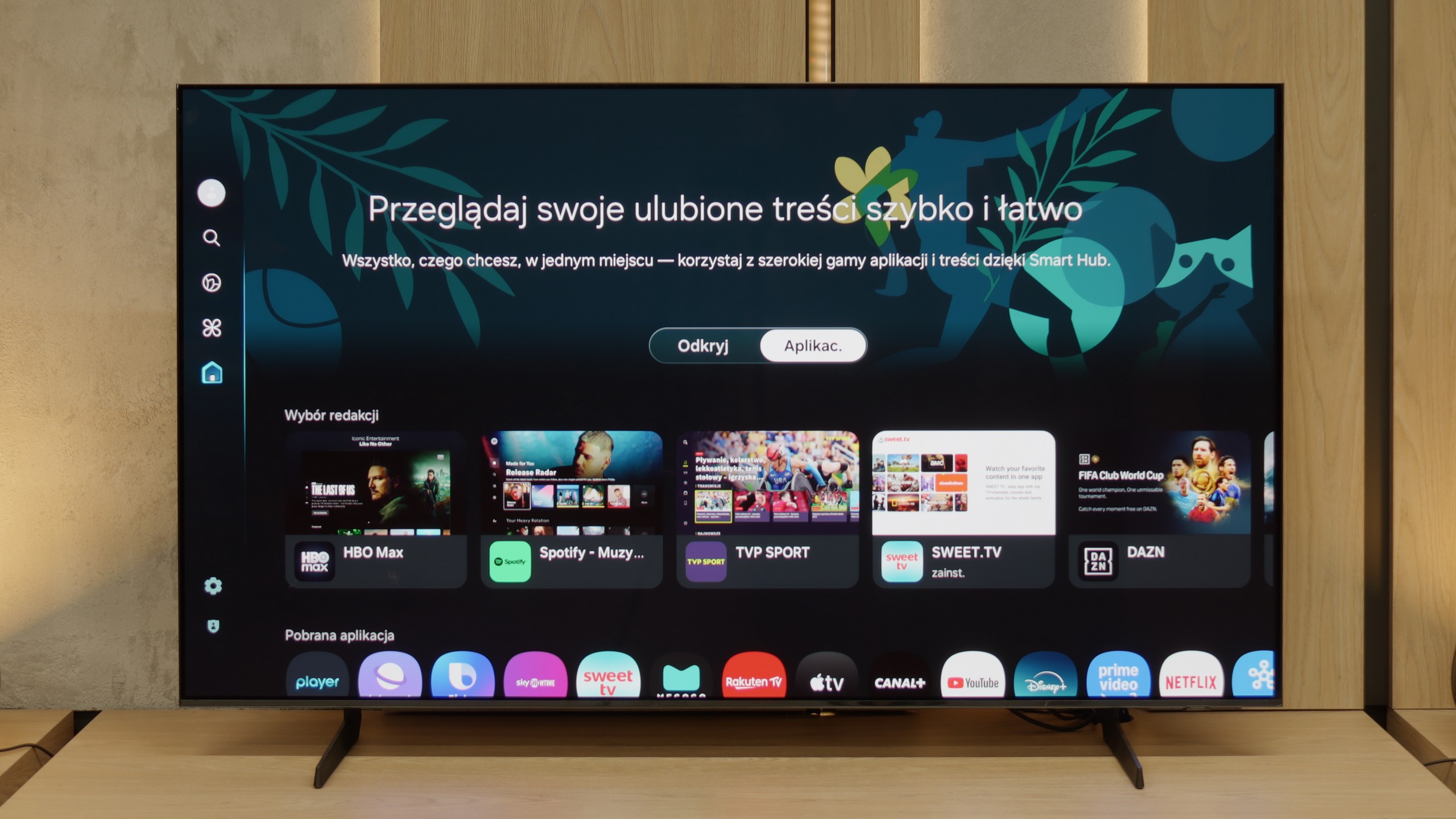
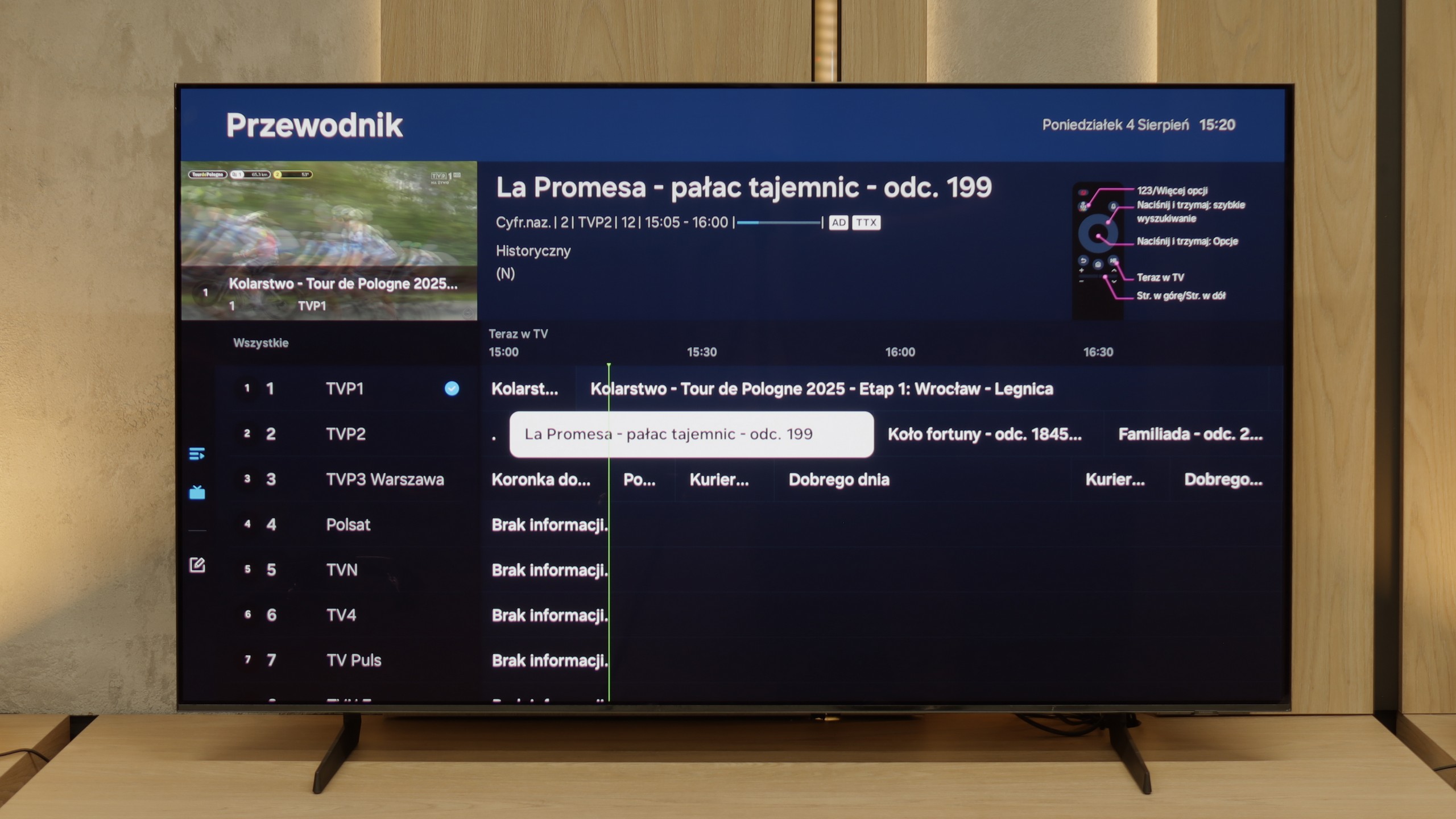

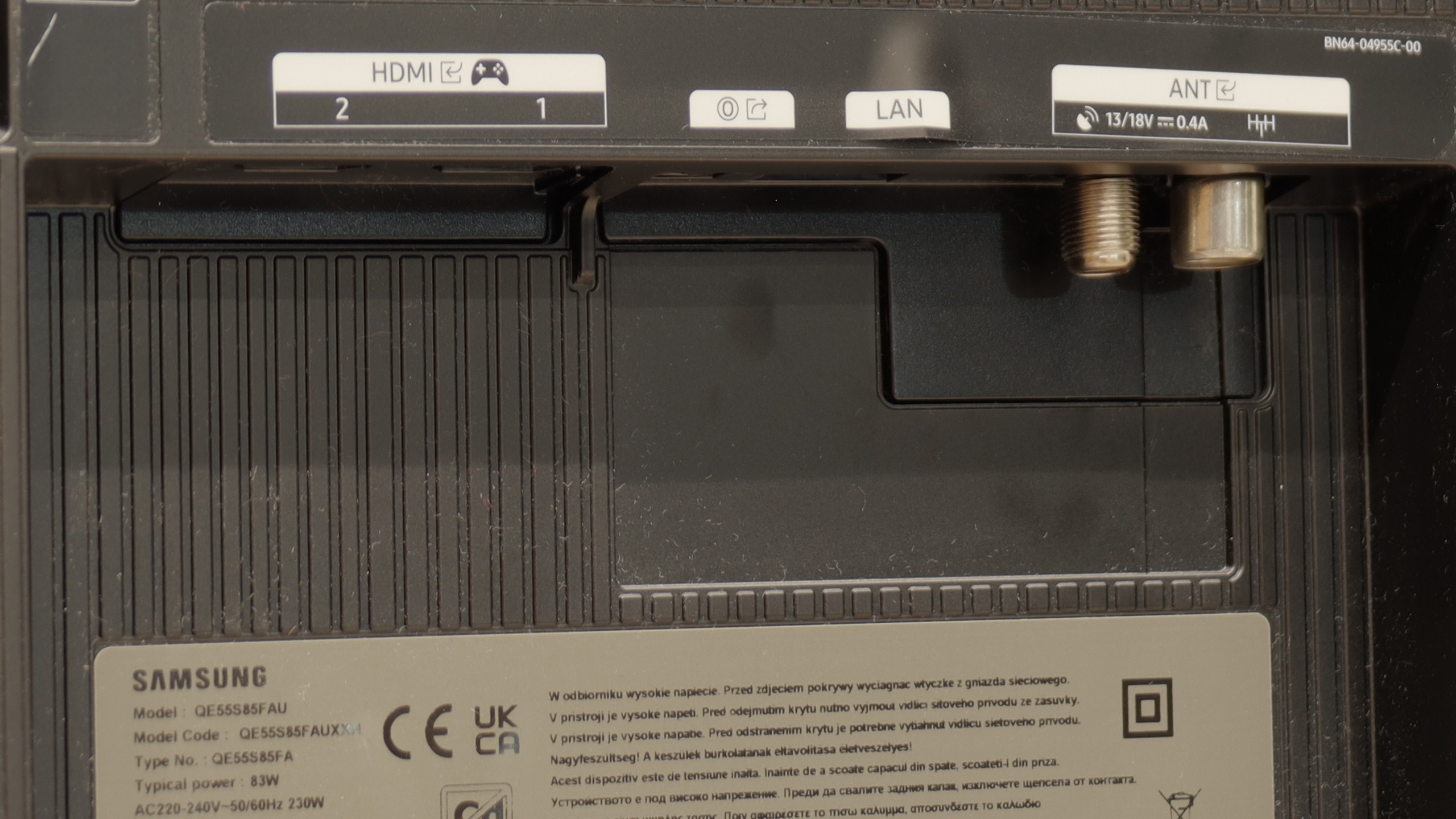
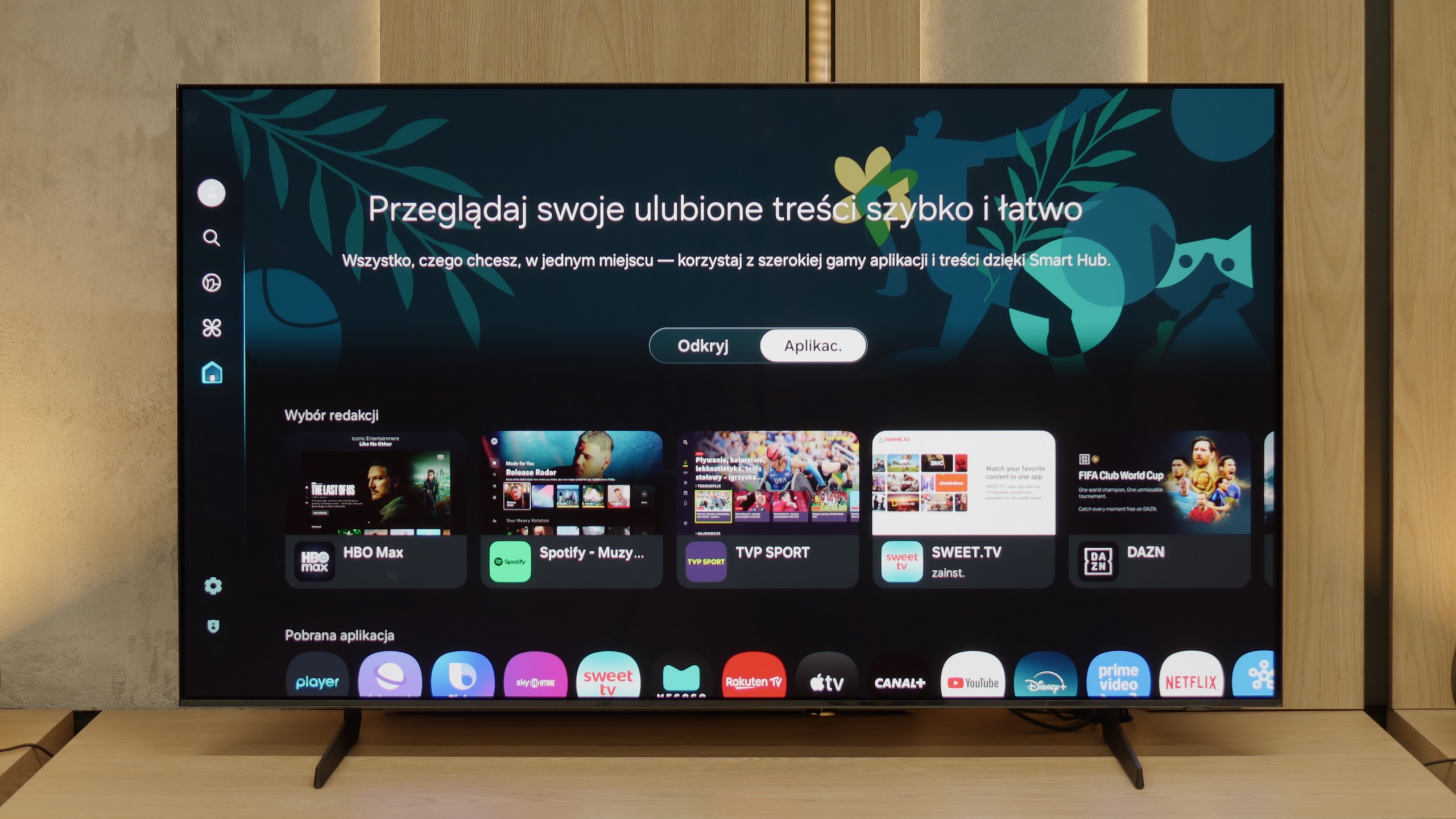
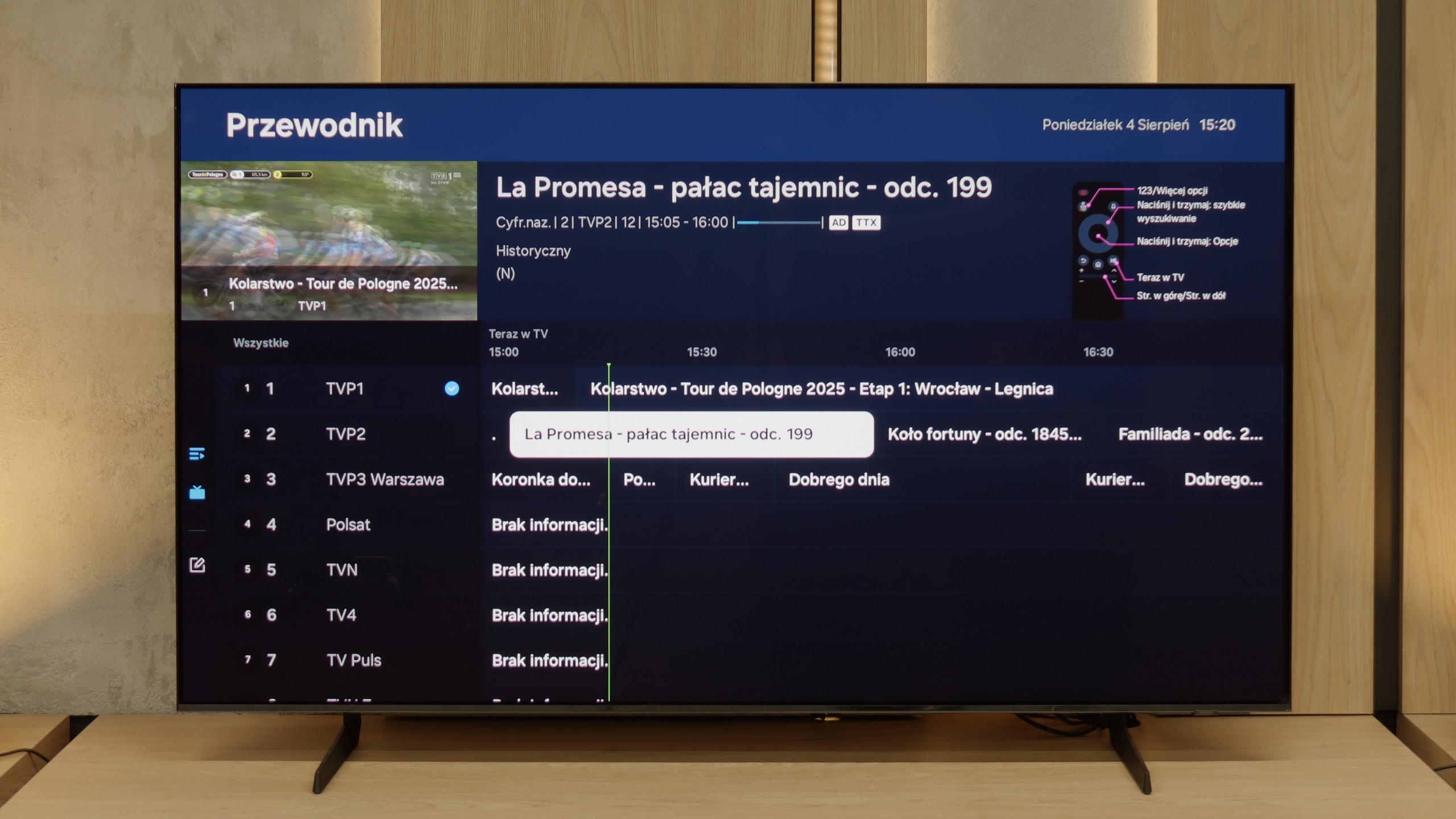

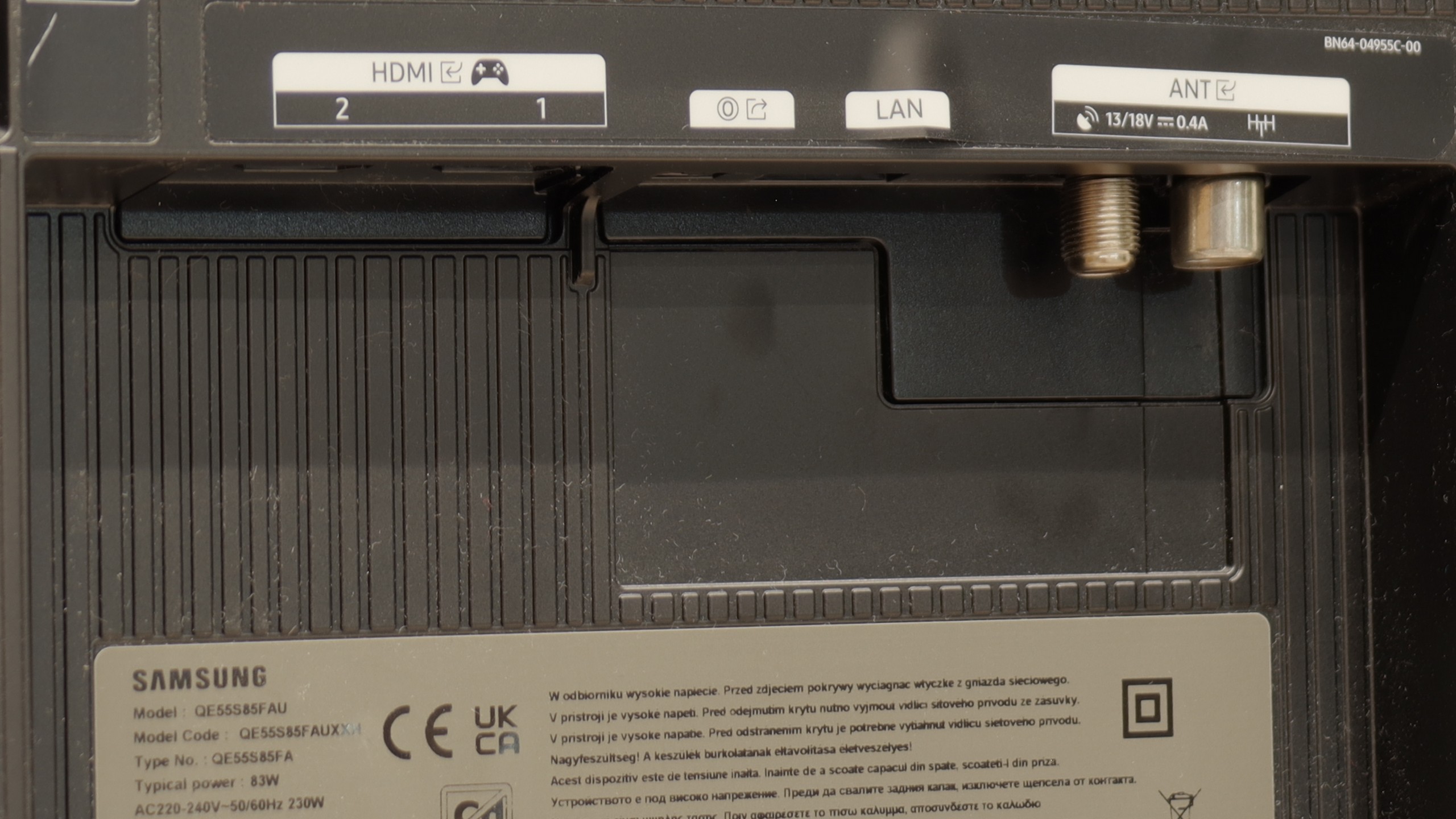
Features of the classic S85F television
The S85F was not really designed with fans of classic television in mind. We won’t find a PiP function here (which is somewhat surprising, as Samsung typically offers it) or the ability to record programs onto USB from the built-in tuners. Fortunately, the basics are there – teletext and a clear channel guide – so it’s more than sufficient for regular, everyday viewing. The included remote, although simple at first glance and lacking a numeric keypad, allows for control of multiple devices. This means that when connecting, for example, a Canal+ decoder, you don’t need two remotes on the table – the one for the television is quite enough.
SmartTV S85F: Tizen
The smart part is a completely different story. Tizen is one of the most comprehensive operating systems in televisions. It operates smoothly, supports all popular internet functions – from screen mirroring to AirPlay to voice search. The strongest point of Tizen is its integration with the SmartThings app, which can act as a control centre for the entire home. Of course, like any closed system, Tizen has its limitations – for instance, a smaller app library compared to GoogleTV. However, looking at the current list of available applications, it’s hard to point out anything that might actually be missing.
Features of the Classic S85F TV
The S85F was not really designed with fans of traditional television in mind. You'll find no PiP function here (which is a bit surprising since Samsung usually offers it) nor the ability to record programmes to USB from built-in tuners. Fortunately, the basics are all here – teletext and a clear channel guide – so it's perfectly adequate for regular, everyday viewing. The included remote, although at first glance simple and lacking a numerical keypad, allows you to control multiple devices. This means that when you connect, for example, a Canal+ decoder, you won't need to have two remotes on the coffee table – the one for the TV will be entirely sufficient.
SmartTV S85F: Tizen
The smart portion is quite a different story. Tizen is one of the most advanced operating systems in televisions. It runs smoothly and supports all popular internet functions – from screen mirroring, through AirPlay, to voice search. The strongest point of Tizen is its integration with the SmartThings app, which can serve as a central hub for controlling the entire home. Of course, like any closed system, Tizen has its limitations – such as a smaller app library compared to GoogleTV. However, looking at the current list of available applications, it's hard to point out anything that could actually be missing.
Playing files from USB
9.1/10
9.1/10
Supported photo formats:
Maximum photo resolution:

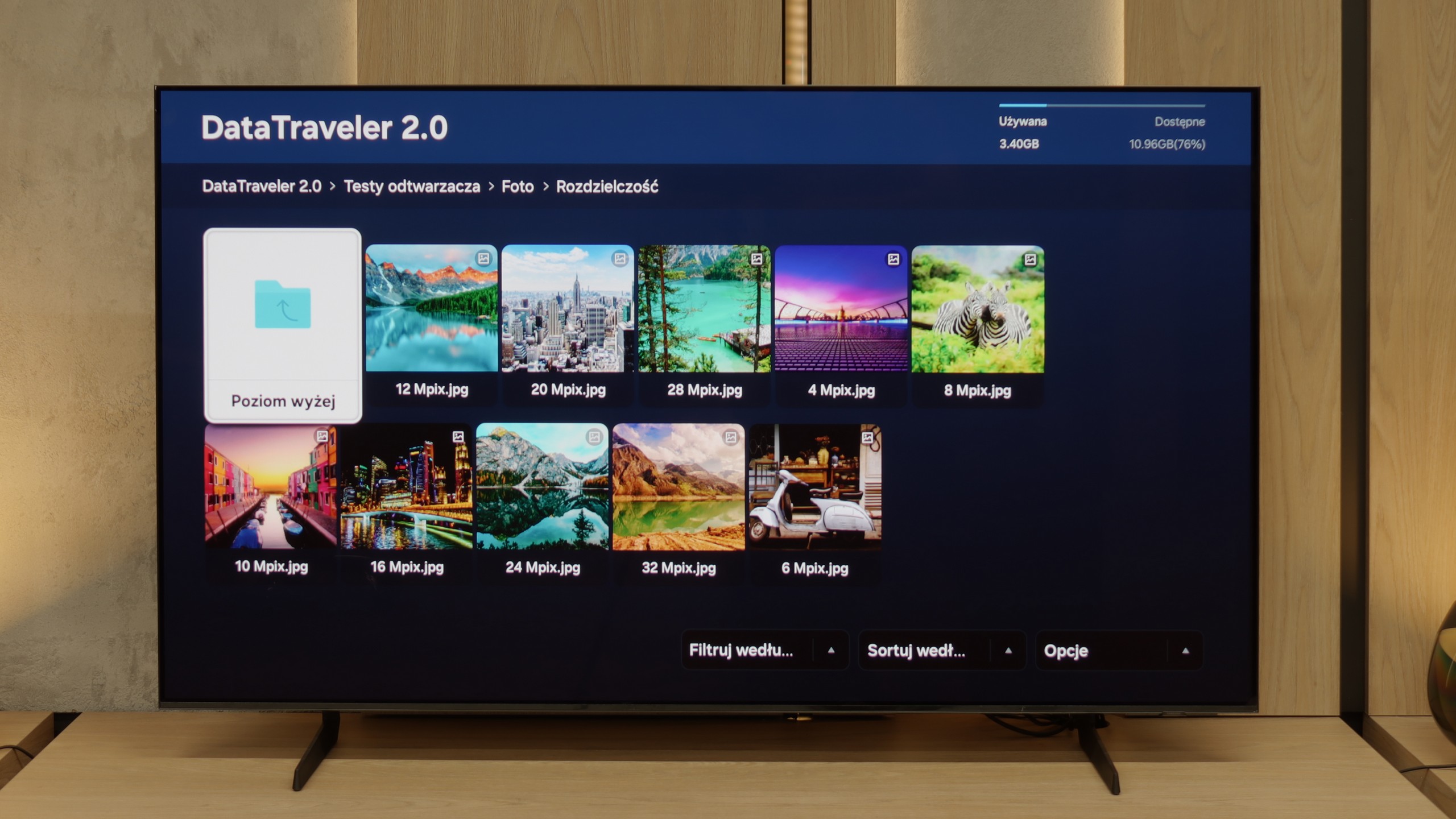
The built-in media player in the S85F performs excellently – practically everything you throw on a USB stick or hard drive will be played back without the slightest issue. Minor shortcomings only arise in the support of some less common photo formats, but for the vast majority of you, this will be more than sufficient. Therefore, it can be confidently stated that for home use, the built-in player is more than solid.
The built-in media player in the S85F performs excellently – practically everything you throw on a USB drive or hard drive will be played back without the slightest problem. Minor shortcomings only occur in the handling of some less popular photo formats, but for the vast majority of you, this will be more than sufficient. So it can confidently be said that for home use, the built-in player is more than solid.
Apps
8.7/10
8.7/10














































Sound
7.2/10
7.2/10
- Maximum volume80dB80dB
- Dolby Digital Plus 7.1
- Dolby True HD 7.1
- Dolby Atmos in Dolby Digital Plus (JOC)
- Dolby Atmos in Dolby True HD
- DTS:X in DTS-HD MA
- DTS-HD Master Audio
The built-in speakers rated at 20 W on paper may not seem impressive, but in practice, the S85F can be surprising. It sounds really pleasant, and at times you can even pick up a subtle bass, which is not a given in this class of speakers. The TV does not support the DTS format, which unfortunately became a standard for most manufacturers by 2025. A nice surprise is the support for Dolby Atmos. Of course, talking about "spatial" sound with two speakers located at the bottom of the casing would be a slight exaggeration, but it's good that Samsung offers such a feature in this model at all.
Built-in speakers with a power of 20 W on paper may not make a big impression, but in practice, the S85F can surprise. It sounds really nice, and at times you can even pick up a subtle bass, which is not a given in this class of speakers. The TV does not support the DTS format, which by 2025 unfortunately became a standard for most manufacturers. A pleasant surprise, however, is the support for Dolby Atmos. Of course, talking about “spatial” sound in the case of two speakers placed at the bottom of the housing would be a slight exaggeration, but it's good that Samsung offers such a feature in this model.
Acoustic Measurements
80dBC (Max)
75dBC
No acoustic data
